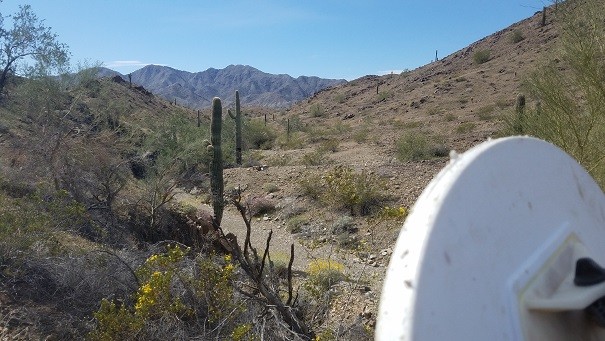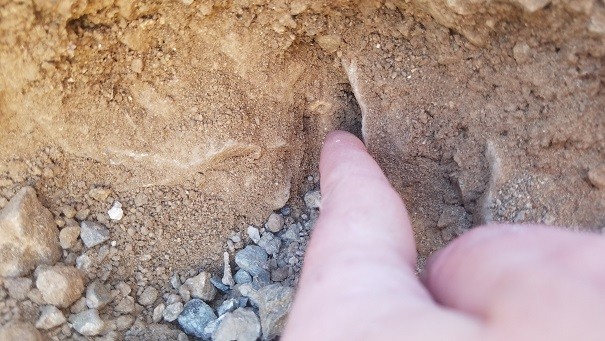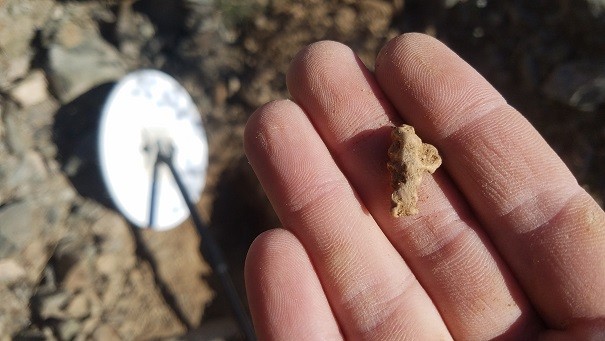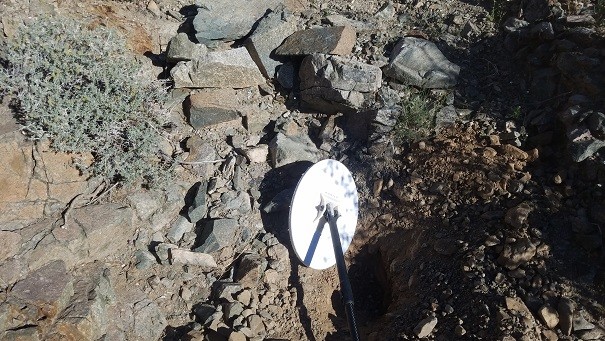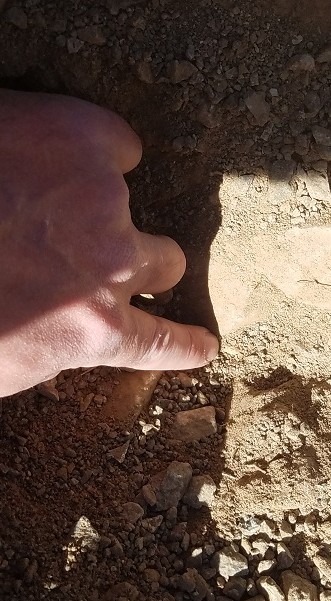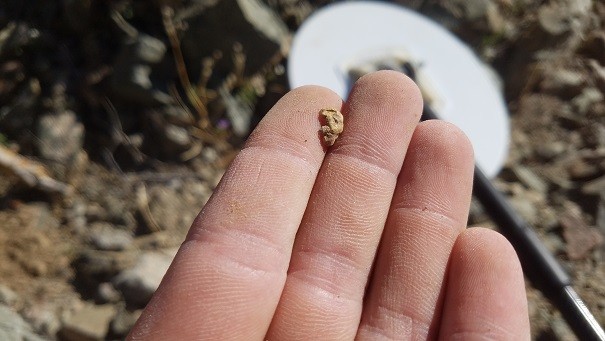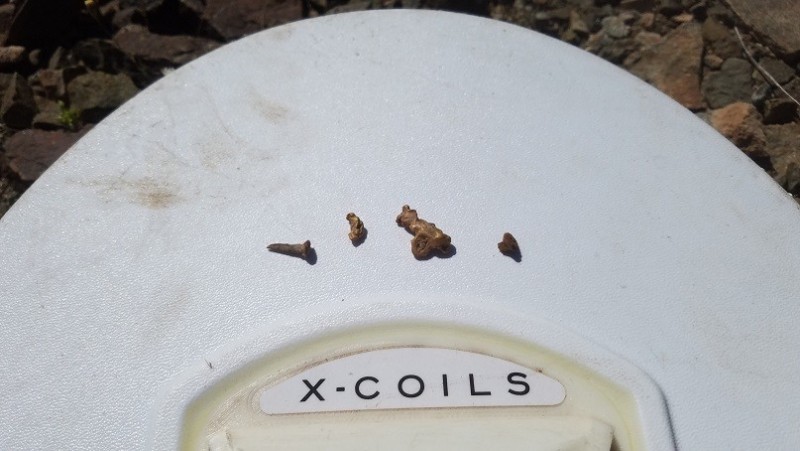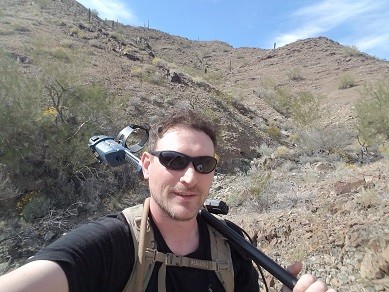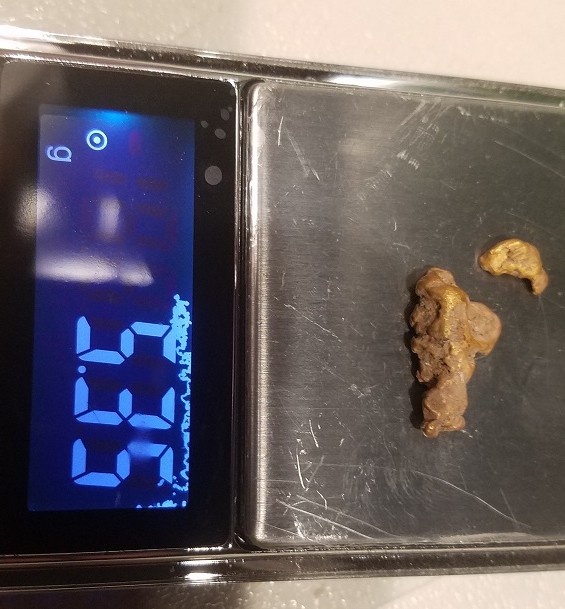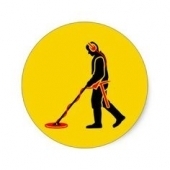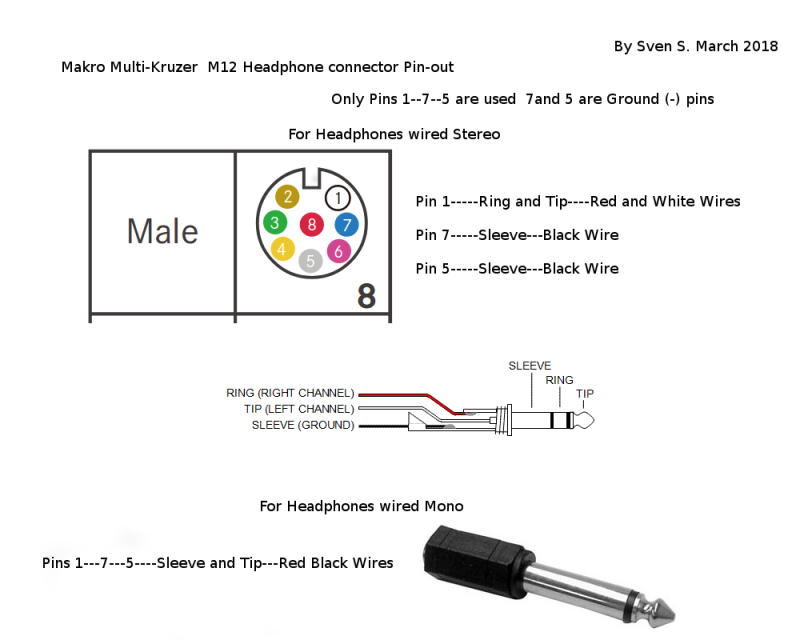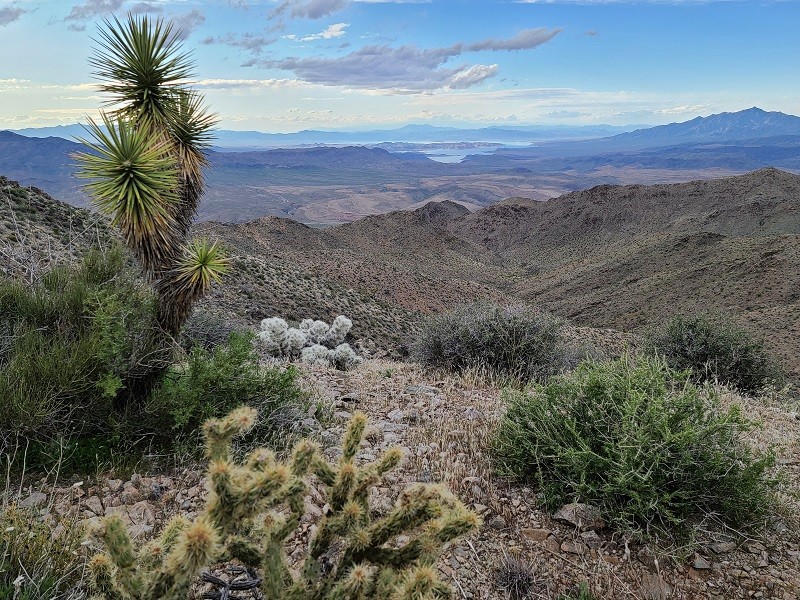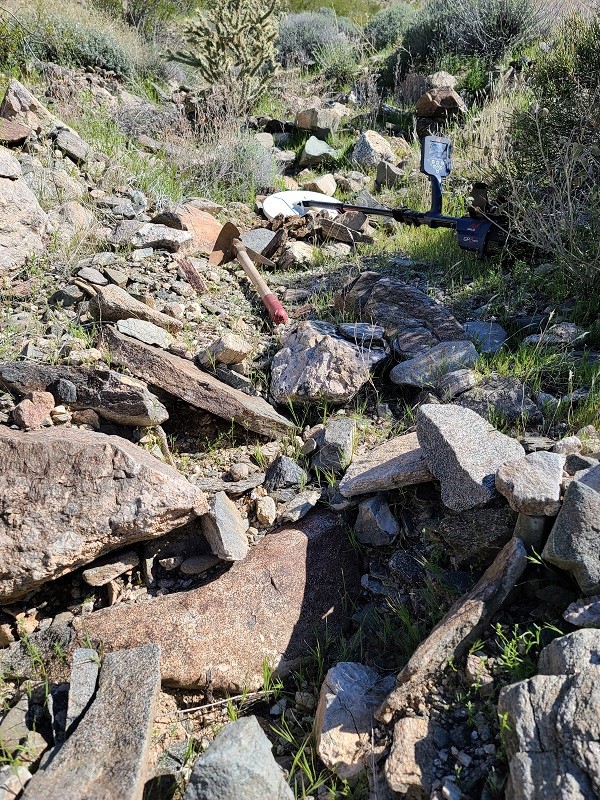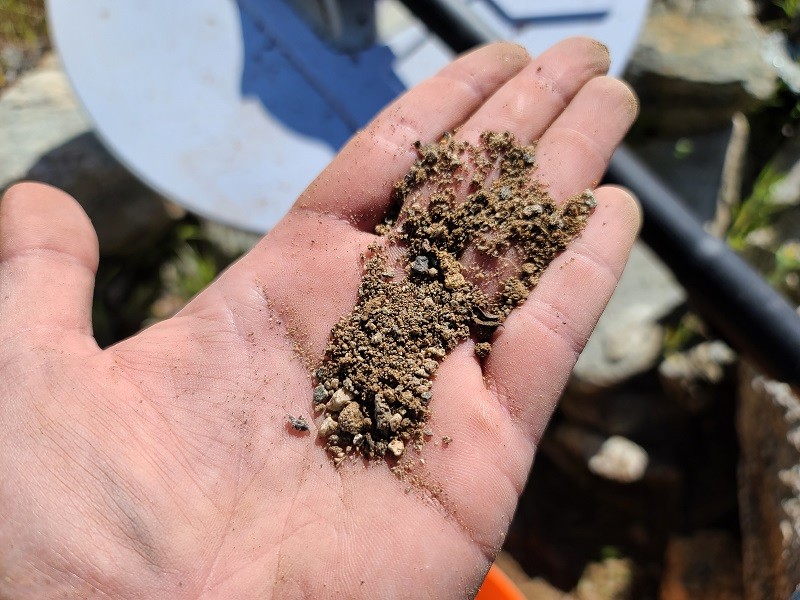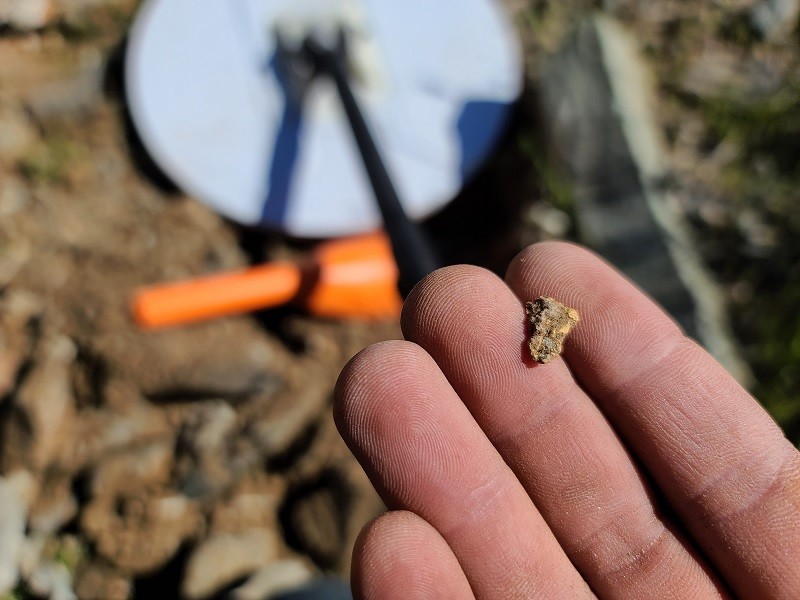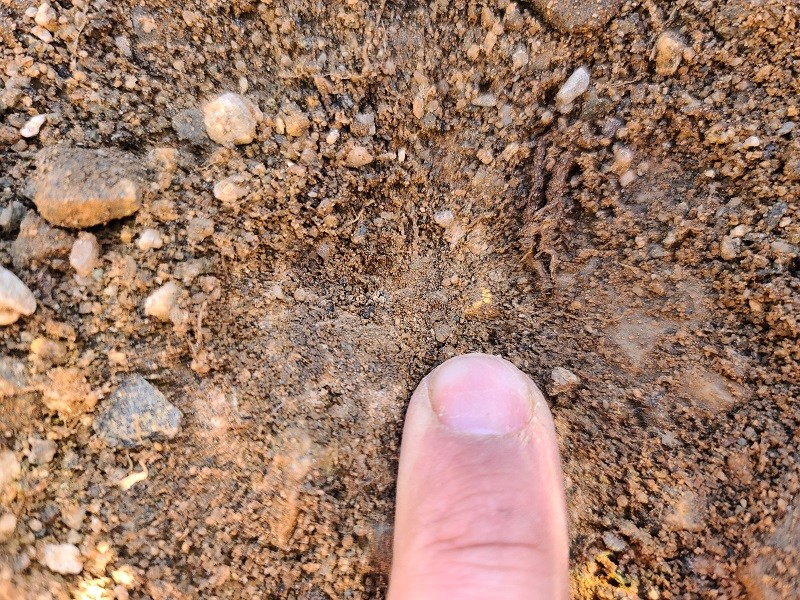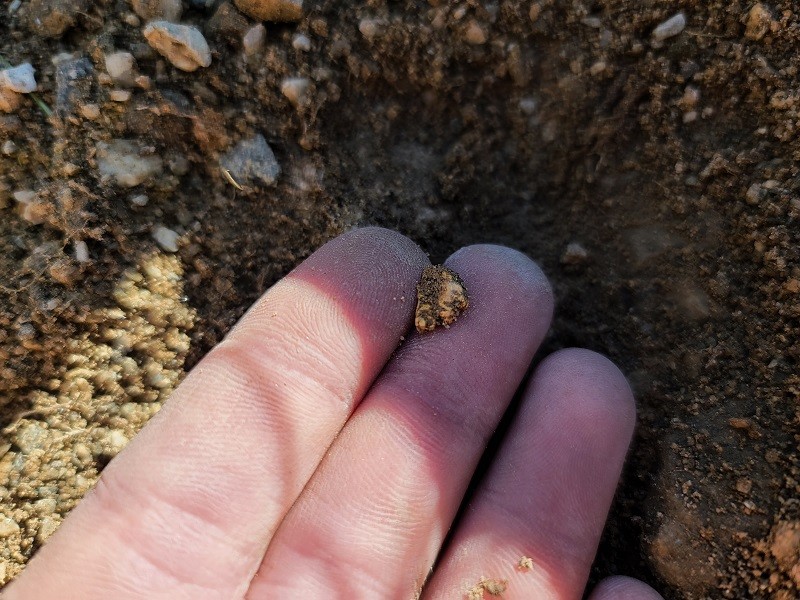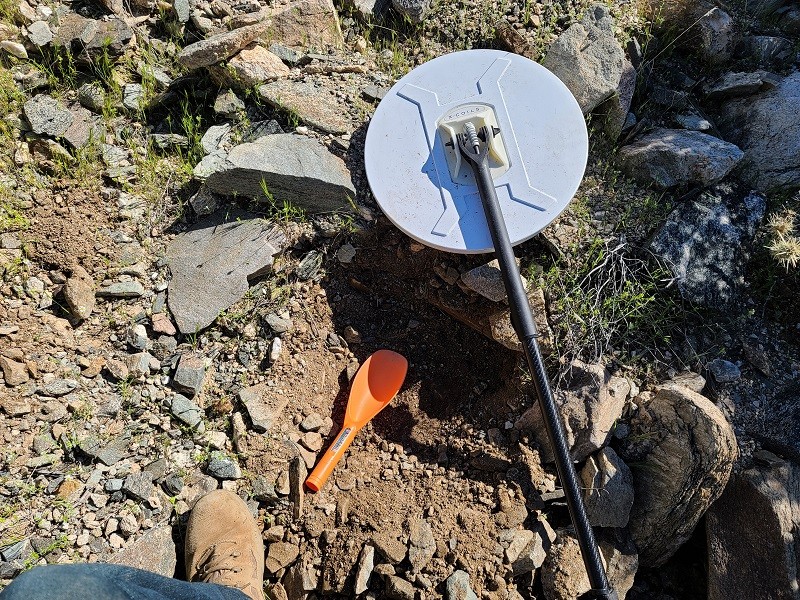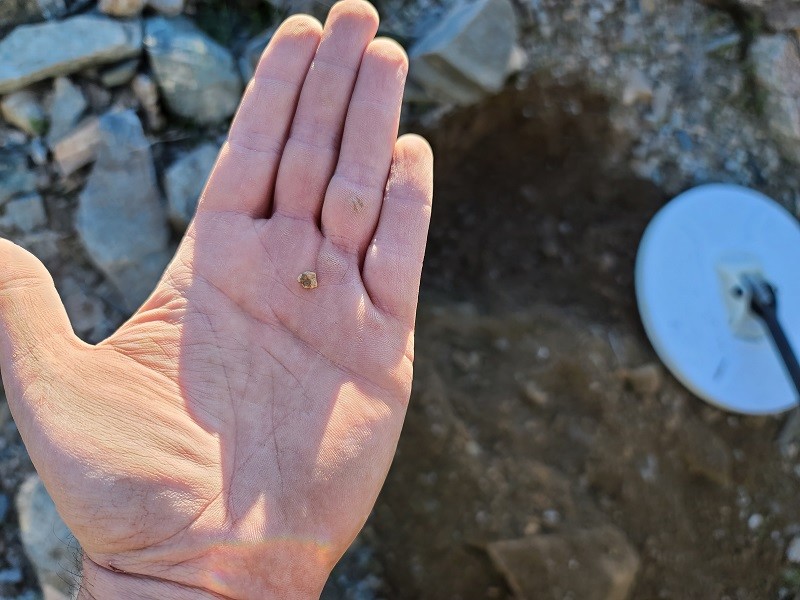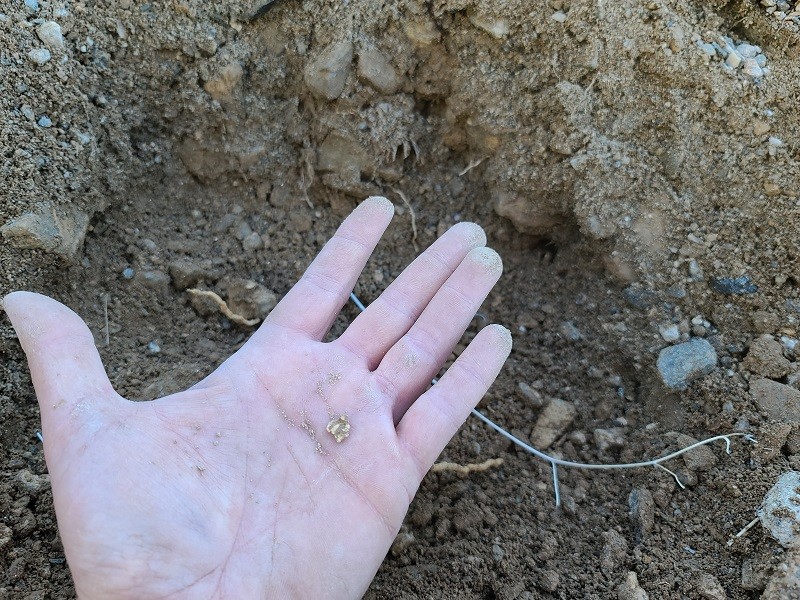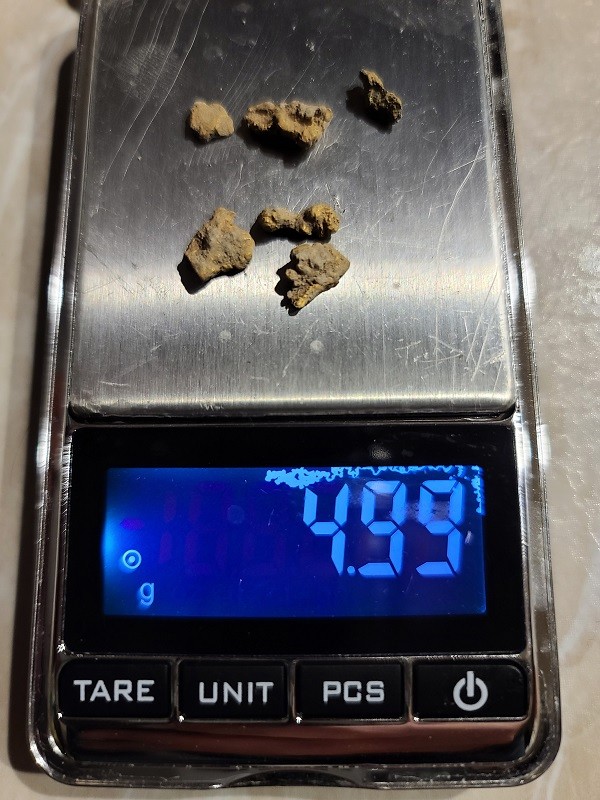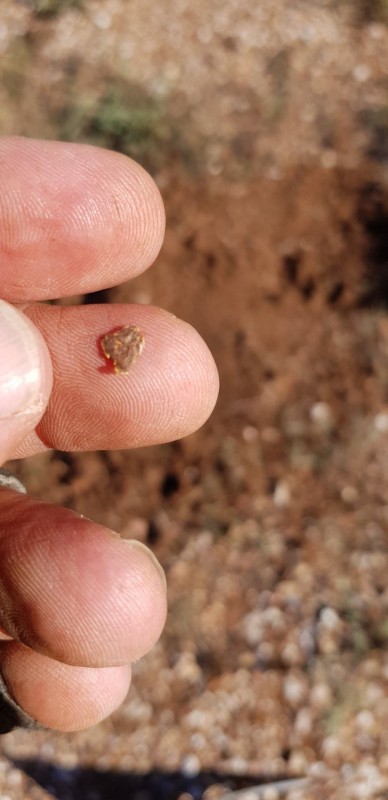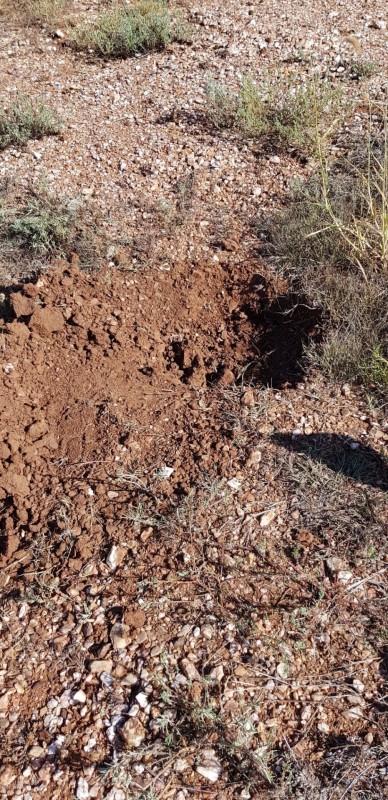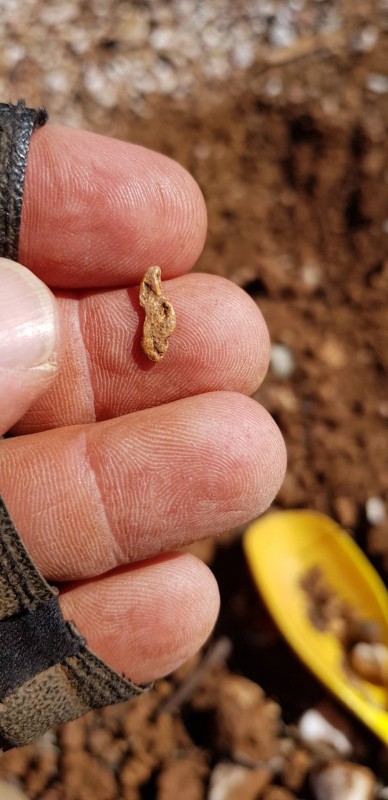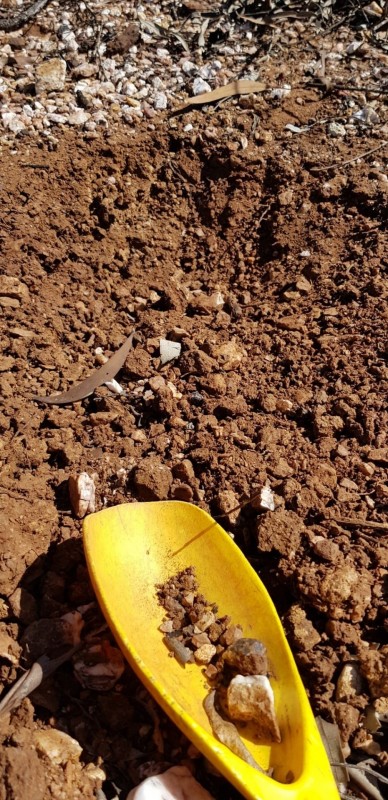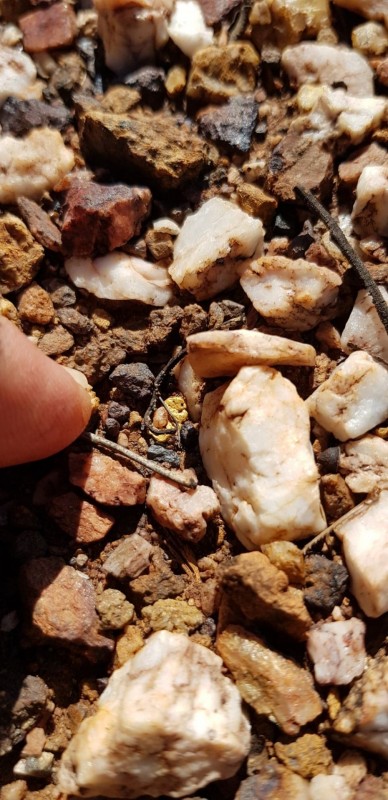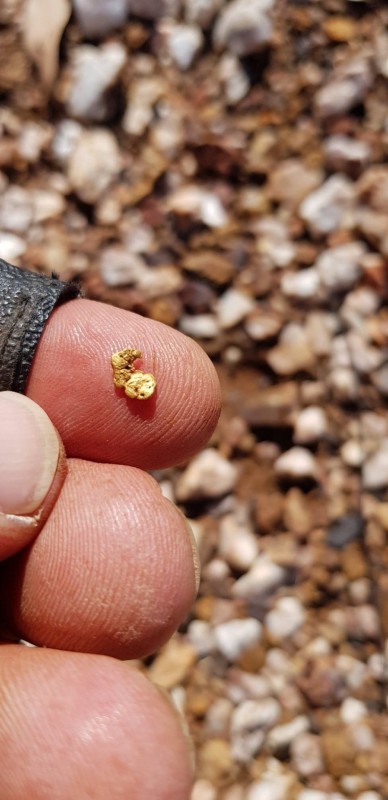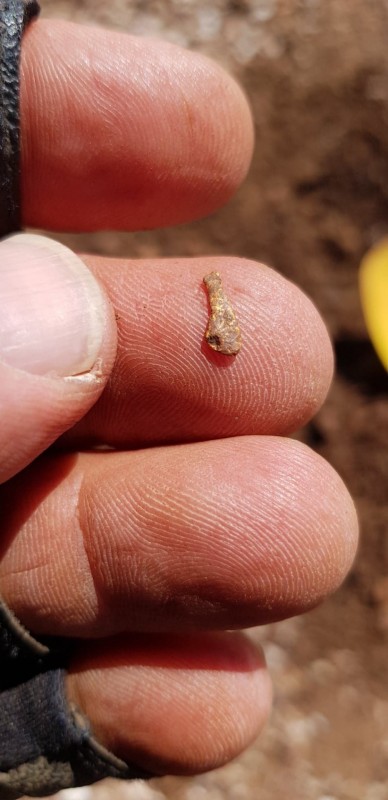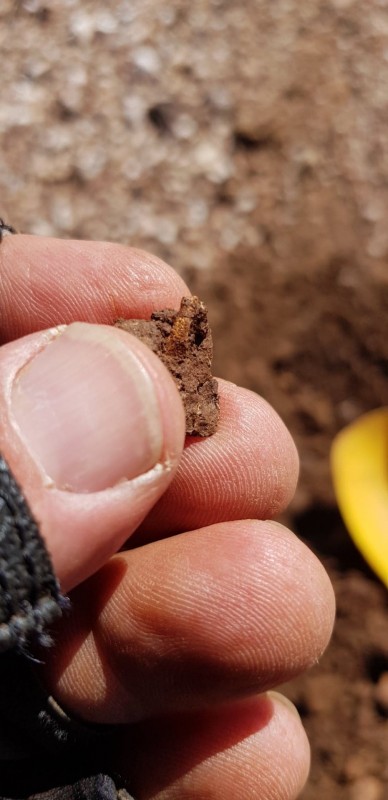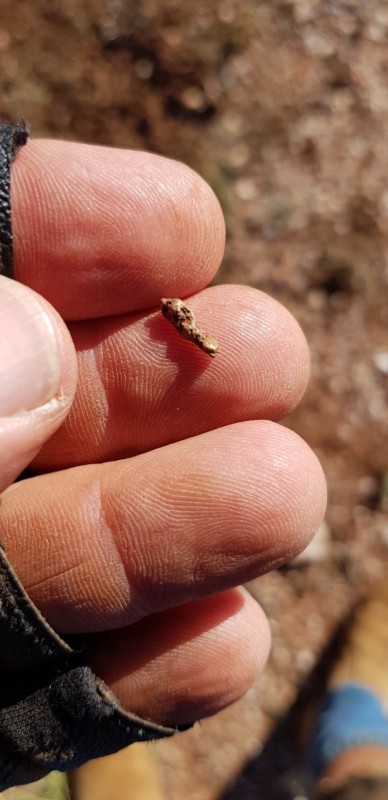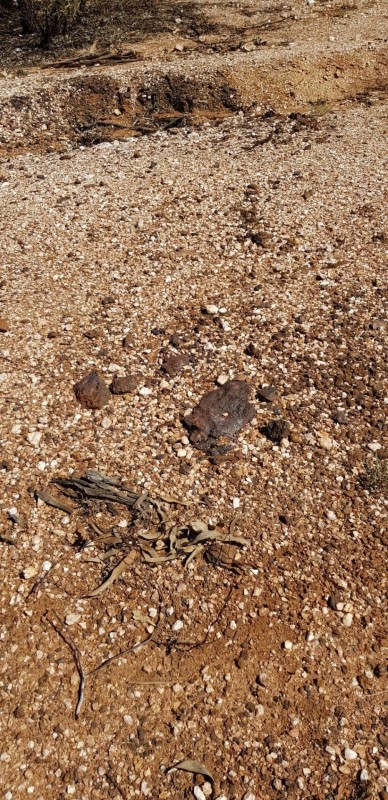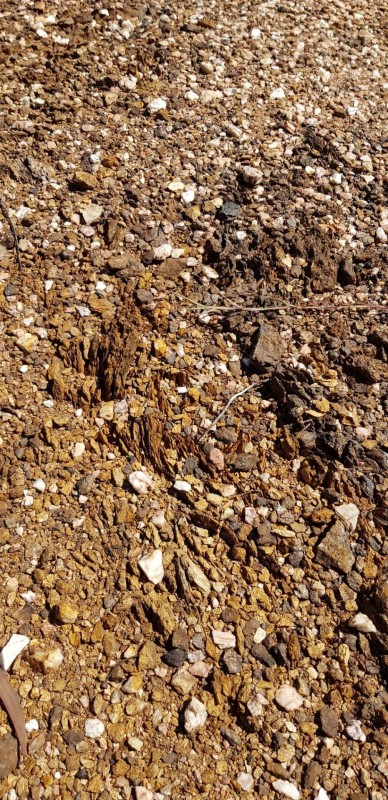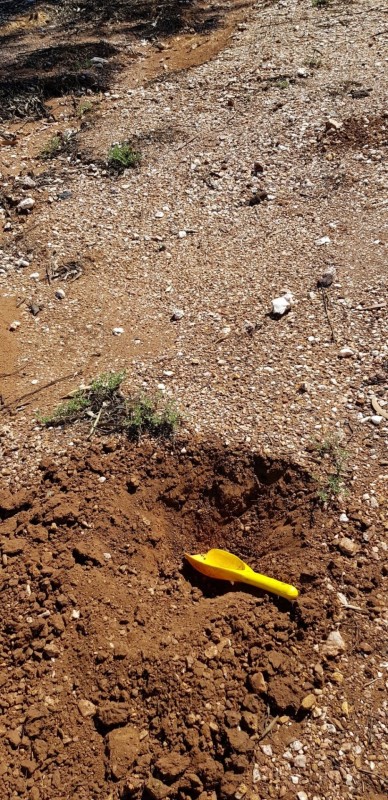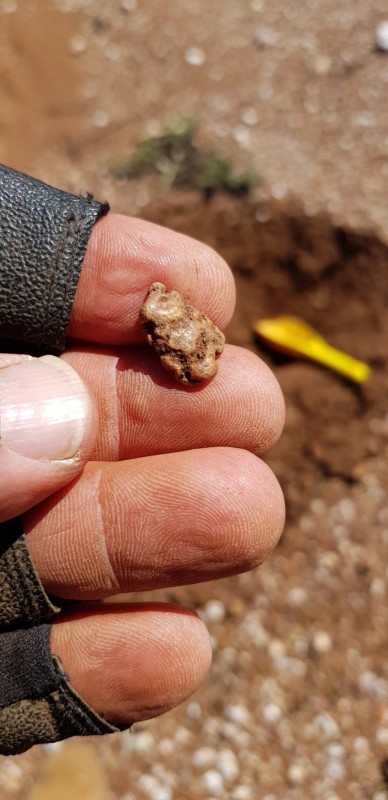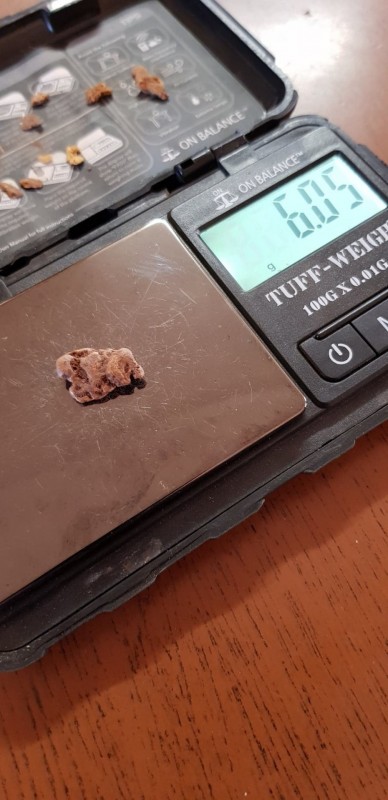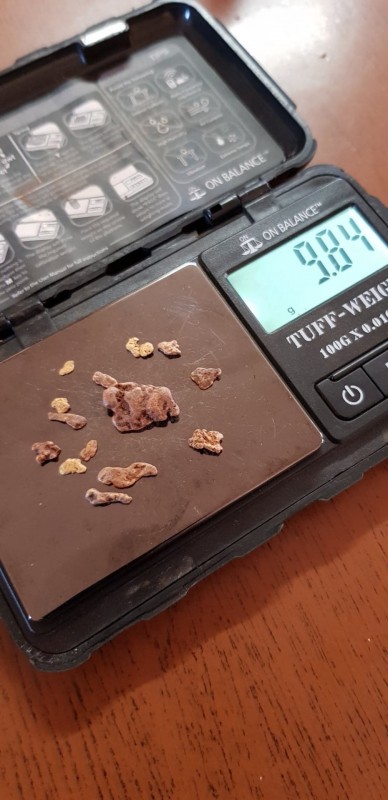Leaderboard
Popular Content
Showing content with the highest reputation on 03/21/2020 in all areas
-
Last post. I'm either heading back home soon or going out to my land to be in total isolation, waiting to hear back on a couple things first. It's been raining/drizzling pretty much every day here. The drizzles are detectable, but when it starts raining hard you don't want to be caught in it since it can wash out your road in pretty quickly with flash floods. The sky has dropped to ground most days and there are still very few people out here. A few locals are wandering around doing test panning. A bit of the scenery here in Gold Basin. It's very Jurassic looking to me. Also a lot of old 60's Star Trek was filmed in the Mohave Desert when they needed to show an "alien" planet, so it always reminds of watching those too. Again I'm a bit slim on detecting pics because when it starts drizzling I just put my nose down and stick to detecting, so words will have to suffice here. I was using the 17" again this day, and I decided to visit a wash which had only produced nuggets mostly on one side of the wash. Many of these nuggets were buried only a few inches in the gravel and hadn't yet reached caliche. The last time I came here 2 years ago I had found a 1/2 grammer on the top of the wash bank under some drywasher tailings, and I had just assumed the nugget had come from the tailings. As always, I entered my observations into my notes, and I was re-reading my notes to look for places to revist with this X Coil. This bank which this 1/2 grammer was resting on was on the same side of the wash as most of the other nuggets had been found on. There were no nuggets found upstream in the wash beyond this last one. It occurred to me that it might be worth a shot to detect the hillside and benches here with the 17" to see if there might be a slopewash patch feeding the wash. This sort of thing is not uncommon out here, as the caliche on the hillside often represents older fossilized stream channels, and in places where the caliche is soft or eroding out, the hillsides can often produce nuggets. When you start digging into gravel and it turns whitish, it's always a great sign as that is showing it likely part of what once once a solid caliche layer and any targets within are almost always gold. I used my GPS to go right to the spot I had found the 1/2 grammer on the bank, and I could see the remnants of the same old drywasher pile. I began searching the area and about 15 feet from my original find I got a short, screaming signal. A bootscrape brushed it aside and I immedietely lost confidence that it was gold, but as I bent down I saw the unmistakable glint of a tiny nugget at the side of my scrape pile. It was a ~0.25 grammer that must have been only 1/2" down. A radius of 25 feet produced another 4 or 5 dinks, all almost right on surface and just barely buried. Looking closer at the soil, what was happening was the surface was once an old wash bottom made of caliche, but now that wash bottom had eroded another 10ft deeper leaving this old channel up on the hillside. Over a couple hundred thousand or so years, the gravels of the old channel had eroded back down into the wash and the freshly exposed caliche on the hillside (and old wash bedrock) was now breaking down with exposure to the sun and rain, releasing nuggets as it eroded. I went to wedge my coil in between two larger rocks that were still imbedded in the fossil channel and a boomer signal appeared as my coil neared the rocks. It was screaming by the time I got the coil edge in. This photo doesn't show it well since the background is out of focus, but I pulled a channel of dirt out between the two rocks, and then pushed the edge of the coil back in and the signal was still there, so I knew it had to be gold. I reached in the crack which was only about 1" wide at the bottom and as I pushed around the old dirt I saw the glint of gold, and it was this nice 5 grammer. You can see the soil is as I explained in a prior post to Mitchel, it's light grayish on top. But then often will be nice and red when you dig into it. The grayish can be seen on aerials and I use it to prospect for areas to explore. It's lighter colored for three reasons: a higher silica content, a higher content of the grayish/green schists, and a higher carbonate content (from the dissolving caliche). The dirt is red from iron oxides. All of these things are often related to good placer gold ground for geologic reasons I won't go into here. The soils that are red on surface can also produce gold, but often they are too young to concentrate it, and lack shallow caliche. There are exceptions as always, especially in Lost Basin. Anyways, pushing the coil around produced another 5 or so more dinks in my little hillside patch, but no more larger nuggets. nothing deeper than 1" aside from the 5 grammer which was wedged between the rocks. I had found a beautiful 20 gram museum quality piece in this wash many years back so I had hoped this patch was the source for more of it, but no such luck. The drizzle evolved, and rain started falling in blobs the size of the tip of my pinky, so large I thought it was hail at first and I made a mad dash back to my truck with plans to revist the area again with the 10". In all, just over 10 grams for the day. 13 nuggets, I think there are probably a few more left. I call this a cheeseburger day, any time I get over 1/4 oz I go to town to treat myself to a restaurant cheeseburger. Unfortunately it was not to be, the restaurants were all closed, virus stuff. I had a nice bologna sandwich when I got back anyways. One last scenery shot, I can't believe how green Arizona is right now, with all the rain. It looks like the San Juans in Colorado, in a way. Just a lot shorter. The cows must be happy, I've been wondering what exactly they have been eating up until now in the desert. That's all for me, just wanted to share some experiences with these X Coils. Until now, due to work and life, my experience with them has been limited to a few days here and there poking around since life has been crazy the last year. This was the first time I had a real chance to give all of them a solid run. I used the 12" the most up until this trip but I didn't take it with me since I wanted to force myself to use these other coils and I really thought the 17x12 was going to make the 12" redundant. But in the end, my least favorite coil is now the 17x12 due to edge sensitivity issues. I'd say the 12" is back to being my favorite all arounder, followed by the 17" a close second (maybe even 1st in some cases). The 10" and 17x12" are struggling to find places in my arsenal. I did put the 10" to good use in another trip yesterday though so I'm warming up to it but I think I've posted enough. Again just to summarize, I was given the 10", 17x12, and 17" free from the manufacturer and I want to make that clear for anyone reading these posts. I have no relationship with the manufacturer, I think he just felt bad about my early experiences and was trying hard to make things right and he went above and beyond IMO. But, I know I personally want to know that information when I read opinions on any products, from metal detecting to truck mod parts, any kind of products. I have tried my best to give my unmitigated opinion on my experiences with each coil here in my series of 4 posts with them. When NF releases their coils I will try to get one and compare it's performance to the similar sized X Coil, and I can guarantee I'll be using which ever one performs the best. Thanks for reading and to everyone who commented, I hope everyone is staying healthy, good luck all.8 points
-
Thursday was an experimental day going back over an area I worked with my son over a year ago, when you work with someone there is a tendency to crowd each other out a bit when the gold starts to come out. Distance is necessary because of cross talk so in fairness to each other you tend to wander into the hot spot then wander out again to give the other operator a chance to ping a few bits as well. Because you can always come back the thought of missing a few due to a bit of crowding is not an issue. This time I was able to just cruise around the hot spots and go about things systematically taking my time. The old boys have gully raked this spot so there are piles of stones thrown up onto the high banks, working these banks is hard work due to the angle of the slope and the annoyance of a bit of EMI getting into proceedings from a high Voltage power line some distance away. This just means an extra bit of threshold warble at times requiring a bit more concentration as the coil is tilted out of flat plain. Working my way through the zone produced a few tiny bits that had been missed then I got a nice low/high response on the high bank which required a bit of huffing and puffing and my detector going off on a little excursion of its own rolling down the steep slope. You can see the thrown out stones in the top of the pic You can see the ground is extremely oxidised, this is due to weathering and the high iron content of the country rock. Next pic is of the country rock that has had all the oxidised layer eroded away leaving the un-oxidised bedrock layer exposed. It looks very similar the Yavapai schists I saw when detecting Arizona with Chris Gholson many years ago. This is what Arizona would look like if it had had the same amount of surface weathering Australia has had! This type of compressed Meta-basalts has quite a coarse crystal structure so is really bad for dam building because water flows/leaks through it really easily, on the way it collects all the calcites and deposits them further downslope or within the soil profile (similar to Caliche in the US). Once I’d gone over the obvious spots and pinged a few bits it was time to go for a meander. In situations like this you tend to become exposed to a lot of trash, in my case the area has been habited since the 1860’s both by miners but also timber cutters and cattlemen. Horseshoe nails and bullets became the norm and because a lot of them are caught up under the grass roots it becomes a real chore to dig them out. With this in mind I went into super choosy mode and only dug the best sounding signals and targeted quartz wash exposed areas in the hopes of pinging a little nugget to then force a slow down and more concentrated detecting to try and extend on any gold being found. Huge BIF dyke indicating the fault line Near the end of the session I came across some really nice quartz wash in a bare area with pieces of ironstone mixed in and pinged a tiny little nugget for my troubles. Careful detecting brought out a few more bits then a nicer piece to finish off the morning. I will head back here at a later date and go over it more throughly. JP Last few bits for the day5 points
-
I have to head home soon. I am a bit short on photos because it's been 50 degrees, 20-30mph winds, and constant drizzle. It makes me just want to stick to detecting and get through the day without messing around. There is no one around, the few people camped out are staying inside. As Condor and Flak have said already - prospecting is social distancing to the extreme and I love it! And it reminds of how it was when I first came here and I had the winters all to myself since everyone else went south. And every so often the sun comes out. The desert is green everywhere now, and I can hear this vegetation and the wet patches on my 17" coil so I'm having to slow myself down a bit the last few days. Notice I've removed my protective cover from GPZ, it's too much of a hassle with constant coil changing. Plus it's a tool, tools get beat up. whenever I sell this machine, the battle scars will be an testament to the machine's successes for whoever the next owner is. A mockingbird visited, bouncing up and down and making cricket noises, coyote howls, rooster crows, dove calls, I'm pretty sure it was trying to emulate an ATV engine sound too. First one I've seen and it was pretty amazing. I also noticed on the way in that someone has begin to detect my area pretty hard, and systematically. I noticed this on a number of other areas as well. Back on topic, my plan was to hike to a 2nd wash which had produced well for me in the past. It's about a 30 minute hike in, and I took the 17" with me to run over the rocks and do some deep seeking. I've worked this wash over 6-8 times with the Z14 because it's near other areas I was exploring and I'd always stop by on my hike back to grab a couple more nuggets on slim days. I've also run my GB2 over it once. This wash is getting really slim on targets. I had been running for a couple hours and began to think my "gas money wash" was pretty much dead. But then like last trip, I got a slight signal above a big pile of rocks. Pulling the rocks aside, the signal turned into a screamer and I knew it had to be gold. About 6" of rocks and about 10" of soil removed, I popped out a 2 grammer after using my flathead to chisel through about 1" of rotten, soft caliche. 30 minutes later I found a dink, with a lot of crystalline limonite and quartz, right in the middle of the wash, about 6" deep. The brown is attached caliche, not part of the nugget. And another 2 hours of poking and prodding, trying deep areas, produced nothing further. As new equipment comes out, this will be a great testing ground, if something new can make this wash produce more then I'll be personally impressed. Total take was 2.62 grams, again a paying trip. I cleaned these nuggets in water so you can get a sense of the porosity and inclusions. Under a loupe there are hundreds of tiny grains of quartz embedded into this stuff along with a crystalline form of limonite which often resists HCl. But I wasn't done yet, as the drizzle started again I hiked back to my truck and decided to take advantage of the 17" coverage by prospecting a hillside I suspect had gold somewhere on it since all the nuggets I found in the wash were on one specific side, and not on all stuck in caliche yet, indicating they had moved recently. One last post soon...4 points
-
I recently returned from a MD’ing trip to Cancun and the 3 of us used Minelab Equinox detectors. Finds included 100’s of coins, probably 10+ pairs of sun glasses, with 1 of them being Ray-Bans, 2 cell phones, numerous ear rings with 1 of them being 14K gold and another was a diamond stud. Chains, bracelets and metals, some broken and others hole. Over 30+ rings with many sterling, a few of the modern Tungsten and Stainless wedding bands and even gold rings (both white and yellow gold). 2 rings really popped out that were both 14K gold. One was the blue sapphire with diamonds and the other a wedding ring with a nice 1+ karats of diamonds. Even the 1st time lady digger scored a nice 14K white gold wedding band with a couple cool sterling rings. I managed 21 of the 30 rings so I won't complain but the amount of gold was certainly off my standards. Pic of rings on my hand were the ones I found minus a sterling that broke when being tumbled. We all enjoyed the warm weather, water and experience. The Equinox detectors performed as hoped. Used Beach Mode #1, GB on, open screen by pushing the Horseshoe, SENS around 17 to 19 and Threshold so I can hear it. All other settings were FP. What amazes me is the gold to modern metal ratio. The resorts I hunt used to produce more gold than modern metals and now it has flipped. in years past, I'd come back with 15 or 20 gold rings on a weeks hunt and never a modern Stainless or Tungsten. Now it seems I'll get more of them than I actually do the gold ones? Well the wife still likes going down there so I might as well get used to it and realize 5, 6 and 7 Gold ring days are long gone at those places. Guess I'll jump into a lake and follow BeechNut around as his gold ring counts are still good.3 points
-
I had my first real hunt for the season today. I still have frozen ground 2” down in some of my spots. The small public boat landing in my town has a grass “infield” area. I first hunted it last season. Several quick 30 minute hunts. Very full of trash! Lots of people like to park and look across at the town. Also great view of the fireworks when the Bay festival shoots them off every year. I don’t know how I missed so many coins. I still have only concentrated on the fringe areas beside the pavement. I literally hit the same spots as last fall. Probably a dozen coins in 20 minutes. Very easy to pinpoint with the small coil. Targets were a solid lock on everything I dug. The few pieces of canslaw I dug were solid at 17. I got a 17-18 number very shallow. Of course I needed to get the trash out, so I dug it up. Very damaged zippo lighter. My second ever. It will get sent in to be repaired. I am not sure I will use my other machines this season. This thing is very fun and light. Very much worth the under 200 I spent on it. btw, I didn’t plan on my gloves matching the machine....just a happy coincidence.3 points
-
Absolute stirling post, upfront and honest, made me want to be out there doing it too. You guys might have a lot of competition on the gold grounds but you sure make up for it in pure scenic delight, I could easily fall totally in love with that landscape. It makes me treasure the isolation and vast amounts of gold areas we have here in Australia, I can literally go to some areas and not see ONE person all season and come back years later and still see no evidence of anyone ever having been there. There are still places in Australia that are hundreds of kilometres from the nearest track, I say track because the track is just that a goat track that has never seen the bite of a dozers blade. Thanks for sharing Jason JP3 points
-
I have used the dual 9'' coil on my Nexus SE for about 4 years,no question about it in that configuration it is deep so well suited for use on clean pasture sites.Discrimination is reasonable but i would not say it was phenomenal.Would i use such a coil design on trashy sites my reply would be categorically 'no' that is still the domain of smaller coils. When i am say a semi trashy site and i also want depth then i use my Nexus MP i do have a selection of large coils and also a Concentric coil for this detector and once again it is deep infact it probably the deepest machine i have that has discrimination,would i choose a large DD coil when using this detector on trashy sites ?? my reply would be 'no' surprisingly enough the 2 coil options that i would use would be 1st the 8x6 (7'') DD coil as that is outstandingly deep for its size,but also still offers amazing discrimination at the same time.The other coil that i would use on trashy sites especially if i was after say silver and hammered gold coins and that would be the 24khz 11.5'' Concentric coil. I hold judgement on that statement infact i would take it with just a pinch of salt.'Perfect Discrimination And Depth In Any Soil'3 points
-
Got an old soccer field that is next to a couple schools built in 1959, bad part is it had new loam put in back in the 70's. I was hoping for some very old coins but thinking that may not be the case. Anyways hit 1/4 of it so far and finding quite a bit of clad, 925 silver ring made in Italy, 64 silver dime and a 41 wheatie. Someone else was hitting the other end where there is tons of trash. Looked like they gave up. Been using the Multi Kruzer to get used to it and starting to learn the audio much better in 3 tone mode. Make a really nice coin shooter machine.2 points
-
Thanks for the really good write-up. Your results are like mine. I have no problem with the Bounty Hunter Tracker IV and all of the FTP products that are very similar. However, the entry level FTP detectors all the way up to the F44 and even the F19 do not have as fast recovery speed, as good target separation or especially the outstanding target ID of even the Vanquish 340, much less than the 440 or 540. So I am not surprised that you found shallow to medium quality targets in an area that you thought was hunted properly already. Jeff2 points
-
I send them directly to Zippo in Pennsylvania. You only pay for the shipping to them. They repair it for you for free. They consider it a privilege to do it for you. They put new guts inside, and repair the case and hinge if possible.2 points
-
Thanks Reg, I can't imagine trying to dig out a 55 pound or 150 pound nugget out of the ground!!! My idea of a nugget was an oz or two, Now I understand your nugget definition.I thought you were kidding. I might have to pack up and move to Victoria and buy a backhoe. Once again thanks for the information, it might give someone the inspiration to find a bigger, maybe 5000 troy oz. nugget ????2 points
-
Mitchel - the trick with going fast is to know when and where to do it. The primary difference is that you are going fast through club claims that are very heavily detected and I am going fast through areas that are much less detected where the easy signals are still in the ground and jump out at me. In heavily detected ground you want to go slow and pick up techniques like JP and JW explain in their posts. The GPAA camp area produced a lot of big nuggets up to 4 or 5 ounces back in the 90's and early 2000's. I'm not a club member as I do not support gold clubs for personal reasons, so I haven't detected any of those claims with the X Coils. It would be a good spot to slow down if that's where you are detecting, and know that you'll be the first with some new equipment there. Chet - Good luck out there, hopefully I'll see ya around next year somewhere in the goldfields again. I'm always down with engineering and science campfire talk. JP - Thanks, I'm glad you enjoy the scenery. It's one of my favorite places on Earth and as much I wanted to share gold, I wanted to share the area too with the forum as it still amazes me every day I go out. I was raised in the country and it's places like this where I feel at home still today. The one thing it's missing is what you guys have a bit of left in Australia, which is the adventure that comes along with being the literal only person out there and discovering something brand new.2 points
-
Yes,thanks for your input,i am aware on how to set the detectors up,its not a everyday use detector as they had been bought for 'specific' site use,and have been successful in the time that i have owned them........most of my detectors that i own and trust me i do own a hell of alot of them and even a bigger selection of coils which at last count was just over 50. I will carry on using what i consider the best detector/coil combination for that specific site and targets that i am detecting on that day,this could be VLF/Pulse machines with the relevant coil/s and always carry a twin box with me as well. What ever style of detecting or targets you are after i wish you well.2 points
-
Minelab Gold Monster easily hits the same target. Tom has never used the GM to my knowledge. And I ditched both the Gold Bug 2 and Gold Monster to use a Goldmaster 24K instead. The Kruzer is more like 4th place for me. But yeah why waste time with all the alternatives - just get a Gold Bug 2. That's always been the undisputed leader for this type of detecting. Just curious. How many single post ear rings have you found in the real world Rick? Virtually everyone seems to do this as a test thing more than actually posting all these tiny ear rings that they are finding. Where is the real world evidence that this is a type of detecting that is actually being pursued by anyone with good results? I've done it and in my experience it is more like aluminum detecting. Tom goes on about these Cartier ear rings with 1 carat diamonds. Yeah, right, maybe where he lives. Not here.2 points
-
Jason, It helps to have good notes and prior finds. I've gone back to my prior finds and spots too often expecting more results it seems. I need more spots. You've explained your method of searching here which is similar to mine when it comes to swing stopper responses but I don't have any geology knowledge to go along with it. My hope has been to cover a lot of ground and 'happen upon' undiscovered patches. I've come upon this 'method' as the result of running in the mountains for many years and also running marathons. I had never really detected for nuggets until 2010. I started largely because I had injured my back and could no longer run and train for marathons. I've completed 21 marathons and hundreds of Santa Monica Mountain runs over the years until then. It is appreciated that you would point out some of the gold bearing features in Gold Basin as you go through your descriptions. I've looked for contact zones, green/red in areas west of the GPAA claims many times. I've heard it said that you find a big wash and you will find big nuggets. My largest GB nugget is 5 grams found at the bottom of a wash. I was 'taught' to go to the bottoms. Then people told me the bottoms were over hunted and go to the tops, that was the pattern. Then people said the tops had been detected and now it is go to the washes and detect the middles at least two or three swings above the bottom. Doing this has gotten me little new because I lack the geological knowledge and I'm just playing battleship. It would have been nice to see what you think of my coil but I doubt we'll be able to meet up before you go back but I'm sure I would learn more than you. Mitchel2 points
-
The Australian list of nuggets only refers to pieces of twenty troy ounce or better. So in earlier times a lump of gold had to be twenty ounces or more to be recognized as a nugget. The largest nugget recorded was found at Moliagul in central Victoria and weighed approximately 2,200 troy ounces.(The Welcome Stranger) The Hand of Faith was the largest nugget found with a metal detector at KIngower, also in central Victoria, and weighed in at over 800 troy ounces. It is on display at the Gold Nugget casino in Las Vegas.2 points
-
Jeff's suggestions are right on target. You might wish consider joining a local club although the governors SIP is hampering meetings right now. I believe the High Desert Prospectors are in your area. Hopefully you will meet members willing to share their insights and you can see what they're using. Hands on tutoring is a big help not only for the machine but for the land and terrain. North of you is Coolgardie, your best bet, still some areas open, unclaimed and nuggets to be found. Dry washing is the norm as most of the gold is small. HH and good luck on your venture.2 points
-
Any dirt here in Victoria.... the hoe-picks are a must have, along with a good bar and a pinpointer (which they neglected to use).2 points
-
How about they make something of interest first and then we buy it? I'll save my charity for the local food bank. VX3 in an MX Sport housing would be a good place to start.2 points
-
I did a little dirt testing today with my MK. I found that the three tone /19KHZ worked the best. I didn't have a stud that my wife would let me bury, so the next best thing was a end link off a gold chain. It weighed 0.145 grams and 14k. The best I could do was about 3 inches deep. Next up was the 7x11 coil. That did a little better, I got about 4 1/2 inches. The pin pointers were my weak link both my carrot and my Nokta couldn't find it which was amazing to me. I didn't do any better pin pointer wise with the lead 7 1/2 shot I tested. The tone would definitely take some serious practice to get hold of, but you would basically have to dig everything from 04 to 21. That tiny stuff is real hard to wrap your ears around. PLEASE let me know what pin pointer will work with this little stuff. Great responses as usual from my fellow detectors.2 points
-
What a whopper! Made me nervous, though, when chipping so close to the nugget with the pick, thought it would get marked for sure. Congrats to the lucky prospectors!2 points
-
Cool watching that dig play out, especially when they dumped that cup of coffee on on it! Nice pay day and good for them.2 points
-
I think I just would have died of heart failure right on the spot!!! That's truly a wonderful find.2 points
-
Went out for a couple hours on Sunday night (looks like daytime, but the lights were on on the field) to the local football field where there have been other goodies found. This is the third time out with a gold ring in the pouch on the way home. I really like how the 15" covers the ground and sings out on rings. This is 10K with a single diamond. Running Park 1, 18 sensitivity, ground balanced, all metal, 50 tones, and 0 iron bias. This rang in a strong 9 and 10. I knew it was a good possibility when I stopped to dig it based on the solid numbers and the tone.1 point
-
It was a rather strange day today ......broad spectrum of finds and dates of coins. BUT .........I got a tiny 9ct gold stud earring in black sand mix. A nice old penny, the other penny is just too far gone to see a date. Another coin for the scrap. Hubby ran off with the stainless steel hose clip thingys......guess some junk is useful eh?1 point
-
Look through the Equinox section of the forum. There is a section at the top that has all you are looking for. SteveH has an article expounding upon the differences and similarities of the 600 and 800.1 point
-
I hear you, Steve. I know nothing of what happened. For all we know, he might have tried to sell it. I also don't know about the visitor traffic levels. I just know the number of posts, and information available, had severely declined the last 4 years. I imagine people visited, found little of interest, and moved on. I've been checking in there at least twice/day for years, but rarely posted because there was little to respond to, and not much I found interesting. Most of the really knowledgeable people, who enjoyed sharing their know-how with others, quit the site years back, at least IMHO. Jim1 point
-
The penny is a war era penny made of steel. Maybe worth 10 cents ha ha. I finally got my carrot to pick up the link. Turns out my battery was a little on the depleted side. It will only pick it up about an inch from the tip. I'm guessing the minelab pointer would do a much better job. The Mk is a great machine but I think its limitations are small gold. Not saying you couldn't find small gold with it, But a higher KHZ machine would be the ticket.1 point
-
I can find gold about as well with any of the models mentioned, though I do agree the newer higher frequency units have the edge over the long in the tooth Gold Bug Pro. If you are not wanting to read manuals and learn controls the Gold Monster is a close to simple and automatic as you can get. If you think you want more controls and versatility (and the learning that goes with that) I’d recommend the Goldmaster 24K. Looks like it’s time for me to update my guide below for the new year though not much has changed since September.1 point
-
Simplex and Amfibio lose depth even in normal miniralization. EQ800 has good depth but lose discrimination in hard conditions. Thats why I use analog MD and Spherical DD coil. May be you should clean your bridge from pigions sh*t and go in right direction.1 point
-
I was in Quartzsite looking for flea markets for 2 days with my girlfriend (she is not a fan of prospecting). I snuck off for 2 hours to do some detecting with the 17x12 X Coil which Al had given to me for free to make up for the problems I had with the early X cords. I've not had any issue with cords since then, they stretched again but not enough to bind up in the shaft and inserting/removing coils has been easy now. Since time was slim I decided to hit a wash fairly close to town which had produced a little over 1 ounce for me with the 4500 and GMT, but which I had not visited with the GPZ at all yet. I figured it was the best chance for me to find a nugget in a short amount of time. Most of the gold found previously was 1/2 gram to 2 grams here. Not much smaller, and not much bigger. The wash has bedrock from surface to about 3 feet deep, a nice quiet gneiss and schist assemblage, pretty standard in Q. Part of the reason for the mild soils. I also thought odds were good that I'd missed all the deep, small stuff back in 2012 and that it'd be perfect to clean up with the GPZ/X combo. I'll try something different this time and I'm going to show the horizons and surrounding land. Anyone who really wants to track it down and find it, go for it. As I detect less and less, someone new or just starting can figure out where they are at. This is looking down towards some mountains that can be ID'ed. The part of the wash that produces gold is about 1/2 mile hike uphill from here, and is currently unclaimed. The 17x12 ran even quieter here than in Gold Basin, no problem running at 20 gain, HY, Normal. Though I run in low smoothing because I like a stabler threshold than most so I can move faster and concentrate. Within 5 minutes of hiking to my spot, I got a decent signal, a bit quiet but repeatable. Mostly only sounded off in a circular area under the coil, as if the coil were an 8" round, and I couldn't hear it towards the ends of the coil. I scraped 2 inches of gravel away with my boot, and the signal was now pretty stout. After breaking out the pick, I got down about 15" and started exposing jagged bedrock. I put the coil on edge and pinpointed the signal to a small area between bedrock juts and then began chiseling and brushing away gravel until I found the nugget with my pinpointer, so I could get a picture in situ. It's at the point of my finger inside a crack that required screwdriver excavation. I pried the nugget out of the crack after fidgeting with the bedrock a bit, and was a bit surprised to see it was larger than expected, in fact this is largest nugget I've found in this wash. I figured it was 3.5 grams by feel. It ended up running around 4.5 grams and paid for all our gas and food for the 2 day trip down. So I was happy, for what was at the time about 15 minutes total into the short time I had to detect on this trip. The hole is at the bottom of my coil. The nugget was wedged down in that bedrock which is unfortunately covered in shadows in this photo, and the total depth was just shy of the length of the coil, so around 16-17". There is a new ATV trail almost to the point where I started detecting so I can't help but feel at least 1 person has had a Z14 over this wash, but I'm not certain. This nugget was sitting almost vertical, and I suspect that is why it was missed previously and not a screaming signal on the 17x12, though the signal was definitely sharp and unmistakable. Another 30 minutes of poking and prodding into the rocks and bedrock, and I pulled up a deep drywasher nail and a the head of another nail. Both sharp and loud signals right in the gut of the wash that my 4500/GMT combo had missed 7 or 8 years ago. I was near the start of the wash, thus the end of my journey and thinking it was about time to turn around and hike back down. And then I hit my final target on the short hike, a ~1 grammer which was also a sharp and pronounced signal, and also right beneath a stretch of exposed bedrock. It's at the tip of my finger, didn't have to dig around with the screwdriver for this one. Here is the sum total of what I found with about 1 hour of detecting and 1 hour of hiking there and back. This is a wash I detected back in 2012'ish with a range of 4500 coils and my GMT (before I had a GB2), probably 8 or 9 times total. I covered most of the upper portion of the wash that had produced nuggets for me in the past, though I suspect I could pull another 1 or 2 out of there if I tried with the 10". I'm also pretty certain the 10" would have missed the larger, deep nugget, but I can't be absolutely certain. Total weight, not bad for an ~hour of work. And one final horizon shot right where the nugget zone starts, up towards the base of the mountain. For all the internet sleuths and greenhorns who can't find anyone to share locations with them to get them started. Good luck. Enough clues here to find the area for a dedicated individual. Overall I was happy with the 17x12 in the rocky wash/bedrock areas. It ran smoother here than Gold Basin, both dealing with ground mineralization and EMI. GB gives me these zips and zaps that are absent here, and struggles with the BIF and basalt, and it's real hard to run this 17x12 full bore in washes there with high black sand concentrations. The magnetite chunks in Q gave me problems but they do with the Z14 and 4500 too, so nothing new there. The main issue I have is the edges seem to not be sensitive enough on this coil compared to the rounds. So while the geometry allows you to push into tight cracks, you aren't always getting full sensitivity in the depths of the cracks as you would with the 10" round. The shape of the area of maximum sensitivity within the coil is odd. A simple sweep often misses subtle targets unless you are over one of the sweet spots, and the sweet spot doesn't appear to just be a smaller ellipse within the elliptical coil, it's some odd shape with hotspots within itself. That sounds confusing, but I have a hard time explaining it better. I think Condor mentioned it already, but pushing/pumping the coil into tight spots over the center of the coil (if possible) often works better to hear the coupling between very tiny or very weak targets to determine if it's good repeatable or ground mineralization. I've been doing this out in the open in the flats in GB too, especially in areas of high mineralization, to determine what is a good target. One thing is certain, in the US it's mostly about knowing where to go, or knowing someone who knows where to go. Or having exclusive access to land. This shows why. This was found in 2 hours, but only because I was lucky enough to start detecting at a time when a lot of people ran their detectors subpar by copying settings off internet forums, allowing me to find a lot of stuff the others missed. Those days are largely gone since the GPZ levels the playing field today. I couldn't walk into a goldfield I've never been to an expect the same results, it was only my knowledge of what and where I found gold in the past that let me do this. So, don't get discouraged if your results are not the same. A new guy would simply just have to hope to stumble on this place by dumb luck since all the leads are gone now, while I can just hike right to it. So maybe this will help someone new find an "old" place. I don't detect as much as I used to these days as I have other projects going, but Al (X manufacturer) sent me this coil for free to try last year, and I figured it'd be nice to do a write up since I wasn't able to run my GPZ on the commercial project I have going due to EMI interference from the CAT 336. The coil performed great here though, and it was nice to just get out and finally do some detecting for fun.1 point
-
1 point
-
1 point
-
I hear you Flak, I'll be eagerly trying one of the NF offerings out next year too. They look thinner and even lighter than the X Coils from the early photos. I'm down with whatever product works the best. I will say, I hope NF keyed into Chet's cable mod and make their coil cables like that. When you switch coils out 3 or 4 times every day it becomes clear that the GPZ wasn't really designed for a lot of coil changing what with where the connector is located and the clunky design of the control box opening mechanism. So much nicer the way Chet has his set up. Aww man, don't make me blush. I am definitely not high on the respect rung in the local AZ detecting community as a lot of people here actually dislike me quite a bit, but I appreciate the compliment. I'll try to put together one last post here in this thread tomorrow of what else I found with the 17" in Gold Basin. My success with it has continued. I wish I had some kind of critical input on it to recommend improvements, but it's a great coil all around, as long as one isn't in alkaline/salty soil.1 point
-
The still photo at the start made me think it was a toilet paper advert. I thought someone might say the paper was dearer than the nugget. cheers sturt1 point
-
Bloody hell. Oops mind the language. Just watched the video. Its still out there. Is this ground a high mineral content? Looking at the grey colour. Where I go to is red, red, red. Not a hope of using the detector in a normal mode due to hot rocks etc. and the difficult ability to keep a good even ground balance. Anyway congratulations to the people on the ground. Had to get the heart monitor out to check the RPM. Fantastic advert for the NF coil, cheers sturt1 point
-
Some have asked if I make them for sale. Sorry to say, cost wise for parts is expensive here in Canada when shipping, Customs fees from the supplier is factored in. Then add labor. For what they would have to sell for that people would pay. There's really no profit. Then shipping from Canada is also expensive. You can make one yourself. Pin out is the same for the Kruzer, Anfibio and Simplex. A stereo jack https://www.digikey.com/product-detail/en/switchcraft-inc/838/SC2735-ND/361544 Microphone wire https://www.parts-express.com/cat/microphone-cables/670 M12 8 pin plug. https://www.digikey.com/product-detail/en/amphenol-ltw/12-08BMMA-SL8001/APC1731-ND/52531251 point
-
^ ^ this ^ ^ Reminds me of a dealer demo. I saw one time, back in the late 1980s or very early 1990s, of someone showing off a device called the "iron eliminator" . And in his audience table demonstration, he attempted to show that it was not hampered by ground minerals, by taking a bag full of super mineralized sand . So mineralized that I think a magnet would even stick to it. And he puts a coin on the other side of the bag, and demonstrates that his device *still* gets the coin. The audience was spell-bound. Until a wise person in the audience pointed out that all he had merely done was tune the machine to *JUST* that singular bag/sample. Such that anything out of *THAT* norm would ....sure ..... cause a beep. But that's not the real world were the moment your coil goes a few more feet in any direction, then presto, it's no longer the same ground.1 point
-
That was great. A clear lesson on why you work the way you do, and where you do. I am also impressed with the thoughts on the 17" coil. I am conflicted though, I still think I'm gonna wait to see what NF comes up with later in the summer (if they can continue manufacturing), I like the idea of not having to f%$& with the cable. Thank you for taking the time. It is always appreciated.1 point
-
Time to strap on the 17". I was given this coil free by the manufacturer. I think I've made it pretty clear at this point that my opinions are my own and I'm not afraid to say exactly what I think though, even if it's not something people want to hear. But first, here's a great view of an arm of Lake Mead from the top of the Lost Basin range, my land is about 10 miles to the left. I love this area, it's stark and rough and beautiful. A few spots in the US really give me a sense of peace and being...San Juans in CO, Wind Rivers in WY, and Gold Basin here in AZ. It used to be solitary too but that's slowly changing, still not much development out here yet though. Vegas is behind the mountains in the distance. Almost all cacti species are native to the Americas, aside from a couple rare outliers. This one is a cholla, and I hate them so very, very much. Those who prospect in AZ know why, especially if you have a dog or like putting your hand on the ground to stabilize yourself. Joshua Trees are more noble, and they only poke your eyeballs out if you don't wear glasses. Back to detecting. I decided to go with the 17" after determining I wasn't getting much advantage running the 17x12, and knowing from past experience how deep the washes were that I planned to hit and that I hadn't found much under 1/4 gram in the past so I didn't want the 10X here. These are 2 "patches", or really just washes, which I found myself and was clearly the first and only coil over. One wash produced about 4 ounces, including a 29 grammer, 19 grammer, and a 12 grammer, two 7 grammers, all deep. The other wash produced about 1.5 ounces of mostly 1/2 gram to 2 gram pieces. I detected each of these washes 6-8 times with the GPZ/Z14, and one of them I found in 2014 and had hit with my 4500 and 17x11, 14x9, and 18" round. As you can see, it's not the type of ground anyone would normally use a 17" round in. Rocky. I felt as if there were no diggable signals left with the Z14, so they were good places to start with the 17" to guage performance. I ran the same settings as I used with the Z14 and I keep a record of all my finds and my settings on Google Earth for future reference - 18 gain, 12 thold, low smoothing, HY, Normal. There are BIF and magnetite chunks here, and a lot of places get pockets of black sand which make the wash bottom hot. But I still classify this as mild conditions. The 17" really isn't a whole lot bigger than the Z14 when it comes down to it, and I can still nose it into the rocks, and glide over them. Ideal? Not at all. Did it work? Yes. Within 10 minutes of poking, prodding, and gliding over rocks, I had a nice signal. Not subtle, but very clear and repeatable. And it was literally right within view of a place I have in a video with no signals on the Z14. I'm confident I hadn't heard this one before. Kicking rocks out of the way and then digging through about 12" of dirt, I pulled out a 1 grammer. It's towards the bottom of my fingers in the middle of my hand if you look close. And about 5 feet further up the wash and to the side I got another great signal, unmistakable and in a place I've hit with the Z14 numerous times. Another 1 grammer with lots of hematite and quartz. And again, 15 or 20 feet further up, and under a pile of rocks and 10" or so deep, I get another one. Caught this in situ as it was wedged into caliche. Pulled it out, this time it was 1.5 grams or so, I forgot the exact weight. Between the dirt depth and the stack of small boulders that was sitting on top of it, it was probably 14-16" or so down. The stack of rocks on top had surely hidden it just an inch or so out of range of the Z14, but the 17" round was able to ping it. Here is the hole, the rocks I tossed off the top are out of the photo, but it was like a little waterfall of 10"-16" rocks that were high enough to just put this target out of range previously. A smaller coil wouldn't have helped because there was no open spaces to shove the coil into, it was the larger coil with greater depth that was able to hear this nugget under the rock pile that succeeded. Most of the targets I was finding seemed to be getting hit like this. I know it looks like the Z14 should have hit a target like this, and I feel the same way, but somehow over multiple passes I never heard these targets. This was maybe 1 hour of detecting so far. And I was thinking at this point I was going to pull an ounce out of this "dead" wash at this rate. But that's where everything dried up. The wash flattened out, the big rocks decreased, and I didn't find much else for another hour or so until I pinged anothe 1 grammer about 10" deep. No idea why I didn't hear this on my Z14 on prior passes, it was a great signal. I believe it was standing vertically though. Finally when it was getting close to the time to hike back to my truck, I hit one more umistakable signal. Here's what it sounded like after a small bootscrape for those wondering what the signals sound like on the 17" which the Z14 couldn't hear at all. Solid, repeatable, and a definite dig me. These X Coils sharpen up signals to me a lot. This signal was more or less near the center of the wash, in a flat area that I must have detected 6 or 8 times with the Z14, no chance I didn't run over this since the wash is only 5 or 6 ft wide at this spot. This coil is just getting an extra 1-2" of depth on 1 grammer type stuff and if you find a spot that has a lot of nuggets left in that additional sweet spot, success will follow. Washes without that magic formula produce little to nothing. And here is the nugget which was making that signal. It was about 13-14" deep and sitting right on caliche. And the total take for the day, almost 5 grams of missed nuggets. This is a profitable day for me, I try to make 2 grams minimum average per day when I'm on a detecting trip. More washes like this would pay to revisit, so I tried again the next day on a 2nd wash, and I'll make another short post on that. Overall, I'm impressed with the 17". Prior to this, I had used it only in wide open, flat areas. But I figured why not give it a go in a rocky wash where there was a history of larger, deeper stuff. This is where it REALLY helps to be the one who first found the wash, and who knows exactly what type of gold was found and how deep, otherwise I'd waste my time and my arm strength running a coil like this over random rocky washes for no reason. This is why people who were around in the early days have such a large advantage of those who started later, and it's hard to truly understand how large that advantage is until one makes finds in a new area themselves. Anyways, the 17" doesn't feel a whole lot heavier than the Z14, just slightly. I can swing it for a good amount of time without using the guide arm and not get fatigued. This coil to me fulfills the promises of what the Z19 should have been. It's more sensitive than the Z14 even on the 1/4 gram type stuff, and definitely gets up to 2" or so more depth on the 1+ gram stuff. One thing is that this coil is so sensitive that keeping my phone in my upper jacket pocket is no longer possible. And the small metal piece at the bottom of my boot zipper is now really annoying where as it's almost inaudible on my Z14 unless I get close. I really find myself needing a longer shaft on the GPZ with the coil too, for those reasons and also because it doesn't get far enough out from my feet to prevent me from stepping on the coil. I'm only 6ft tall, ML just needs to start making longer shafts for future machines. Also, properly noise cancelling with this coil is essential. It'll pick up EMI like crazy if you detect wash sides, but I was able to mitigate most of that by noise cancelling multiple times through the detecting session. I can get away with once a day with the 12" round, or sometimes forget to noise cancel entirely. No way with this 17". That is to be expected of any big coil though, bigger antenna for EMI. I really have no complaints or suggestions for improvement on this coil at all, it does what I expect it to do and it's definitely got a place in my arsenal now. The edge sensitivity is great, and the coil hits small stuff and deep big stuff alike. This is the first time I've really felt like I'm finding stuff I couldn't have found somehow with my Z14/GB2 combo. I feel most these targets would have been inaudible at any setting on the Z14.1 point
-
Hope the guy that did most of the digging got more than half the bounty. Yes, so many videos make it look easy by just showing the result. Hingsight is 20-20, but seems like they could have brought out the digging bar earlier. Now I can imagine how disappointed someone is when they (repeatedly) work that hard for a piece of iron.1 point
-
1 point
-
I tend to agree with Jason on the 17x12 X-Coil, I've come to some similar conclusions about the tip sensitivity. As I mentioned awhile back, I felt I was losing targets with a side to side sweep and had better success pushing the front section between the windings at suspected target signals. The hottest section seemed to be a full 2 inches off the edge directly between the windings. If that's the case and you're losing 2 inches off the front and 2 inches off the back, you're not pushing at 17" long coil. I've found some tiny gold with the 17" round, but it tends to be much more dense and lack the porosity that Jason is experiencing with his Gold Bug. I'm headed to the desert for some social distancing and detecting tomorrow so I'll give that 17" round a good workout. Hopefully, I can get over some deep targets and make a few recordings for the shut-ins. Tally Ho1 point
-
Hi friends, a new video about an ancient swiss goldmine is online. I hope, you enjoy it. Stay healthy! And1 point
-
JP, You have just described hunting for iron meteorites in Franconia, Arizona. The tiny little pieces are loud and hard to pinpoint and they are near the surface. There is no gold in the area where these are found. Now I know why they are 'easy' if you know the area. It does take a bit of coil control on the small ones. In some areas where I detect for gold there is a tiny wire that we hear. It is loud and hard to pinpoint also. All of this time I thought it was because of size but now you have explained it. Unfortunately in some of these areas there are some hot rocks of varying size that will be loud also and I have wanted the gold sound to be as 'bright' as those but now you have explained a difference which may improve my gold recovery. Mitchel1 point
-
OK, Steve has very kindly split the thread up so now I can focus on showing off my gold finds in this thread and doing interesting audio/visual material in the other. Yesterday was jolly good fun.😇 I returned to my “Sunbaker” patch and initially with a slow start kicked into a much higher gear pinging gold all over the place. I approached it with a different mind set gear wise this time but basically the main advantage was going steady and digging everything. First cab off the rank...deep deep deep. 🙂 For the next hour I just continued on working the area and being more thorough, some of the targets were shallow and sounded like trash so it required what I call an “Emu Parade” approach where your constantly squatting down retrieving tiny lead shot and bits of other trash. I’m pretty good at picking the buried non-ferrous targets over shallow ferrous, here’s a little tip to help you get better at it yourself. Non-Ferrous only reacts to one aspect of the detector Rx creating an Eddie current which when the detector coils Rx passes over causes a signal to be created. Ferrous does this too but ferrous is attracted to a magnet and seeing how the detector is magnetic in nature there is a bit of extra signal created on ferrous items that blends in with the Eddie current signal. This causes two things, one is a brighter harsher more aggressive signal on ferrous objects (Especially tiny ferrous stuff) and secondly due to the over exaggerated discordant signal it makes it very hard to pinpoint the target when your trying to retrieve it. If you find yourself flapping around in the dirt swearing a lot it’s more than likely going to be a ferrous object that is refusing to be where it sounds in relation to the coil. Non-ferrous on the other hand will almost always sound nice and mellow relative to distance from the coil until the coil is coupled right into the loudest response right on the winding. Almost always non-ferrous will provide a nice smooth sounding mellow response especially if it has a bit of depth to it. I will post up an audio video on the other thread at some stage to demonstrate the non-ferrous signal aspect when I have time. Also just as an aside in-situ gold has a halo that adds an extra layer of smoothness to the target signal, there is a distinctive mellowness to a long buried piece of gold. Using conservative settings is the key here with the audio, too much volume and too much sensitivity kills this information due to the subtle nature of the tonal/volume variation in relation to coil proximity. Pics of a lot of the pieces found during the session. I always try to think about why gold is present in the environment, there is always a clue if you look, unfortunately it is often after the fact and not so noticeable when you are walking the area trying to get onto the gold in the first place. But occasionally you see a clue then target the area and bingo gold, I find this incredibly rewarding when this happens. Trying to piece together the gold story in an extremely altered environment is often hard but essentially its all about alteration, gold fluids, depth, iron rich rocks, heat and pressure and metamorphosis. Gold zones have a story but unwrapping that story is the challenge and sometimes due to weathering and alteration and tectonic plate movement things get jumbled up into a coagulated mess that is hard to unravel. In this instance the clue is really obvious and goes to show how gold is in the environment, especially the length of time it is in the environment compared to erosion and weathering of the present day surface. In this instance gold is moving slowly down slope, gold is also weathering out of parallel structures upslope but the majority of the weathering of the gold is happening in a vertical fashion In combination with downslope movement. The next pic is of a section of iron rich indicator country rock. You can clearly see it is very iron rich and has weathered accordingly, it is also very hot to detect and is extremely magnetic and high in X signal. A GPZ coil that does not X balance well will sound very noisy here and also get lots of loud hot rocks that do not sound usually off on a correctly X balancing coil. Downslope the ground is quite noisy and variable due to the material that has weathered out of the contact. Iron rich indicator The next picture is of some shear associated with the contact and is a sure sign of gold being present, this is quite different to regular slate that has been upended. In this case you can see it is quite localised and mainly associated with the indicator. It is these contacts that produce the nuggety gold but they are quite often hidden by overburden and vegetation. Rest assured they will be present though. Shear The sticky-up-rock that is twisted and tortured is caused by compression and folding along the fault line, at great depth and under extreme heat and pressure they provide prefect channels for gold fluids to flow along. The contact with the iron rich indicator is a perfect spot for gold to drop out of solution causing the formation of nuggety gold. It’s been theorised that gold drops out of solution when there is a pressure change like during an earthquake, even mild ones, whether it happens all at once or little bits at a time over long periods is the interesting question. Finally near the end of the session I was rewarded by a deep mellow sounding low/high and a bit of cream came my way in the form of a 6 gram chunk, happy days😎. Watch this space there is more work to be done.😇 JP Pics of the big boy and the days total1 point
-
Great write-up Jason. You have a great way of sharing your experiences and your conclusions. Glad to know you are out and about, we always benefit.1 point
-
Great post, Jason. Just goes to show there is still good gold to be found in Q for the dedicated detectorist...well done!1 point
-
Other than my minding the store here for historical purposes, the world is moving on. Soon Tesoro will be just like Compass Electronics... a fond memory for us old-timers. Hmmm, maybe I should change this into an analog detecting forum that celebrates all the old machines regardless of brand. Obviously just being a Tesoro Forum will run out of steam entirely as time goes on.1 point
-
A reference collection of threads about the Minelab Equinox, grouped into rough categories. Minelab Equinox 600 Data & User Reviews Minelab Equinox 800 Data & User Reviews Minelab Equinox Software Update 1.7.5 Released Minelab Equinox Software Update 2.1.12 Released Equinox 600 / 800 Full Instruction Manual (English pdf 5.59 MB) Equinox 600 / 800 Getting Started Guide (English pdf 847.71 KB) Equinox Battery Charging Recommendations And Warnings Minelab Equinox Parts & Accessories Page Some Equinox Videos Done By Purchasers Can I Be Critical Of The Equinox Here? Equinox 600 Versus Equinox 800 Minelab E-trac, CTX 3030, Excalibur Versus Equinox Minelab Multi-IQ Technology Explained Selectable Frequency And Multiple Frequency Tips For Getting Started Equinox and Electrical Interference (EMI) Short Bursts Of Intense Static Or Interference More Tips For Getting Started Even More Getting Started Tips Latest Tips For Getting Started And Yet Another Getting Started Tip Loose Rods, Wobbly Rods, Rod Flex Important Tip - Global Vs Local Settings Minelab Equinox Factory Presets Minelab Equinox Tones & Advanced Tone Options Video - Adjusting Zones, Tones, & Tone Volumes On Equinox External Speaker Not Turning Off When I Plug In Wired Headphones Headphones That Work With Nearly All Detectors Equinox Recovery ( Detect Speed ) Settings Recovery Speed & Target Masking Recovery Speed & The Conveyor Belt Ground Balancing The Minelab Equinox Equinox High Mineral Tips If The Audio Is Open Gate Or The Snap Shot Type ? Iron Bias - What It Is Why Only 50 Points Of Target ID Resolution? Nickels Versus Tabs Bottlecaps & Equinox Target ID Normalization Some Minelab Equinox VDI Numbers Another Equinox Target ID Chart Target ID Numbers Can Vary With Search Profile & Frequency More reference links below the ad..... ads by Amazon... UK Target ID Numbers Canadian Target ID Numbers Australian Target ID Numbers U.S. Gold Coin Target ID Numbers Jewelry Target ID Numbers & Tones How Metal Detector Discrimination Works Iron Falsing A New Way To Do 50 Tone Audio Is Park 2 The Magic Mode?? Park 2 Compared To Field 1 Or Field 2? Park 1 & Field 1 versus Park 2 & Field 2 Multi-IQ Frequency Weighting Differences Between Park & Field Modes Number Of Saved Profile Slots For Custom Settings User Profile Button Gold Nugget Detecting Tips More Tips On Nugget Detecting With Equinox More Equinox Gold Prospecting Tips So What Is Gold Mode Exactly? Equinox First Gold Nugget Photos My First Equinox Gold Nuggets Equinox, Micro Nuggets Target ID Numbers For Gold Nuggets & Gold Jewelry Complete Set Of Equinox Physical Measurements Remove Or Reposition Equinox Handle & Pod Assembly? Waterproof Connections & Audio Jack Sizes Equinox, Lithium Batteries, & Air Travel Equinox Battery Life Test Minelab ML80 Wireless Headphones Check ML80 Battery Level Equinox Future Firmware Updates Minelab Discount For U.S. Military 2018 - Year Of The Equinox! Minelab Equinox - The Best All Around Detector I Have Ever Used! The Simple Reason Why Equinox Is Special The Video I Have Most Enjoyed So Far - What Makes Equinox Special I Saw In A Video Where Equinox Got Beat By.... Early Minelab Testers Question?? Equinox 800 - My Take, Commentary, And Testing Is The Equinox A Deep Seeking Machine?? Gold Coin Found With Equinox1 point



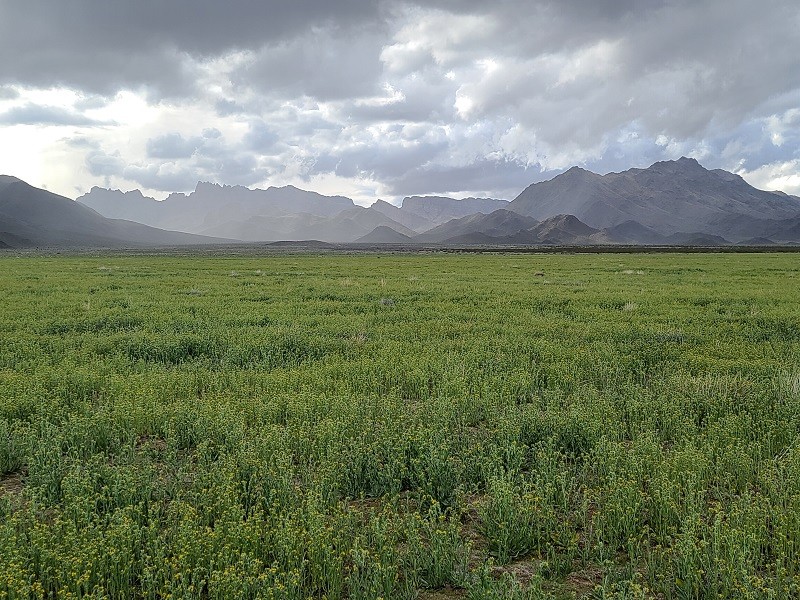
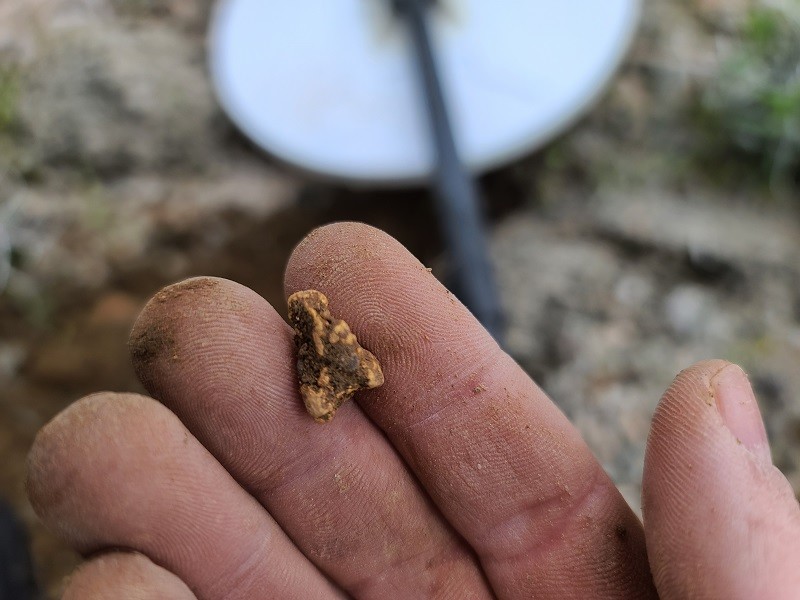
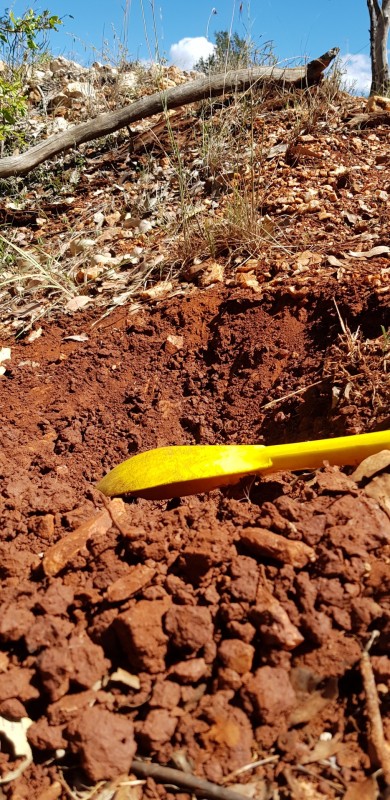
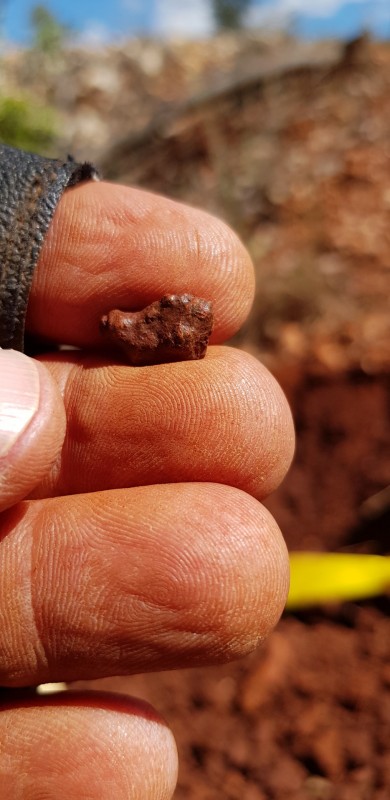

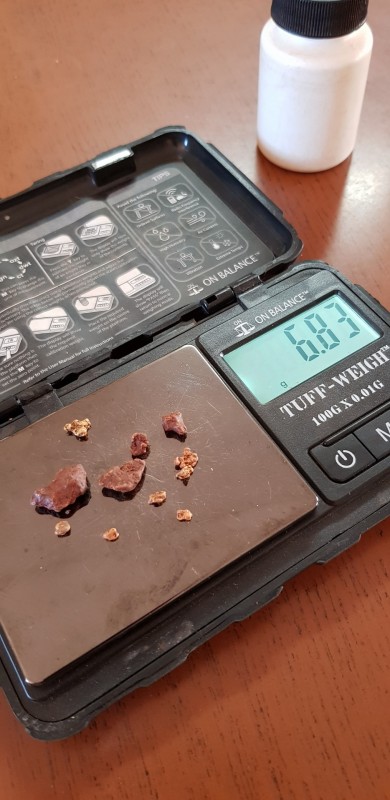
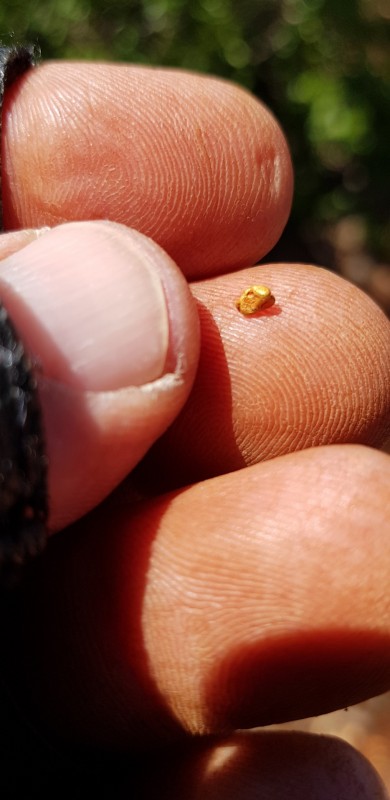
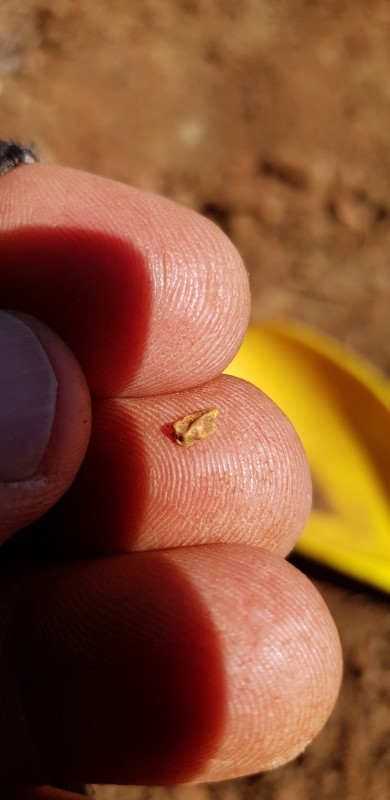
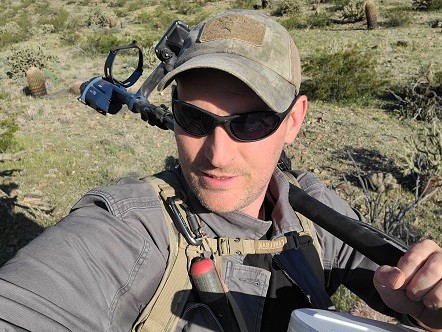
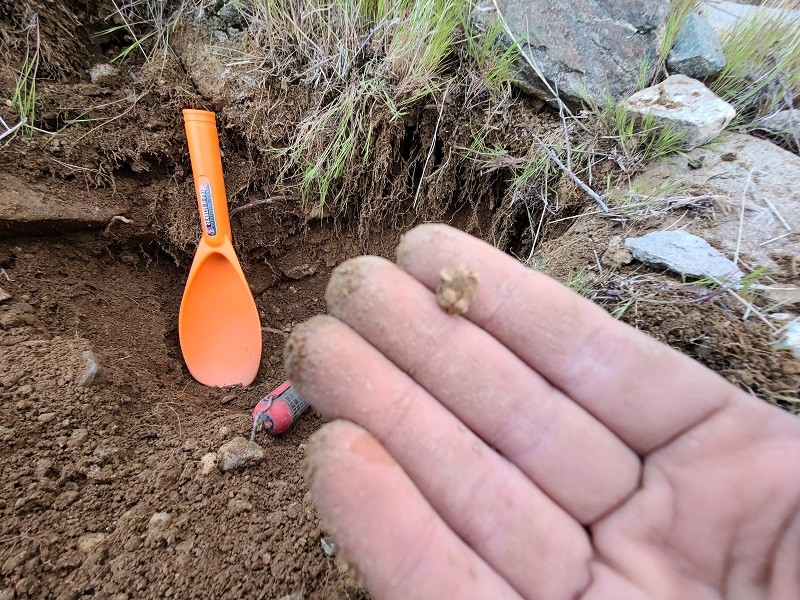
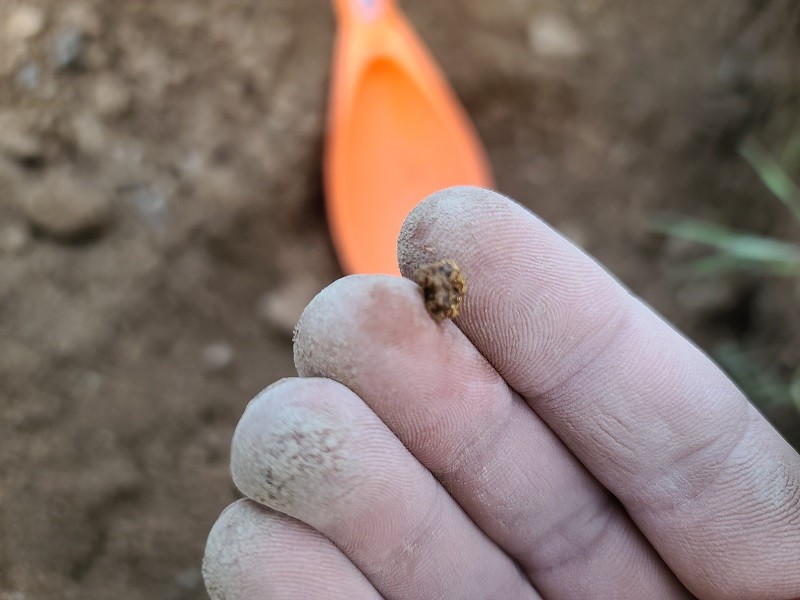
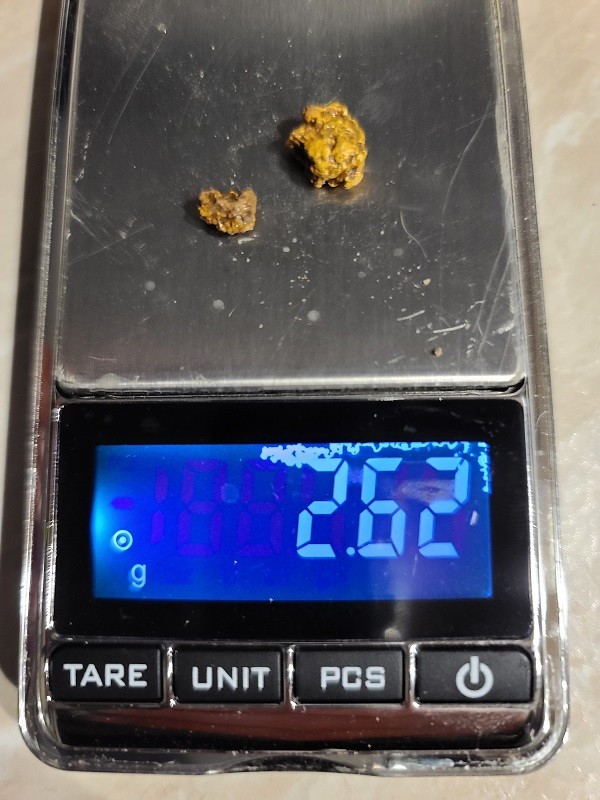

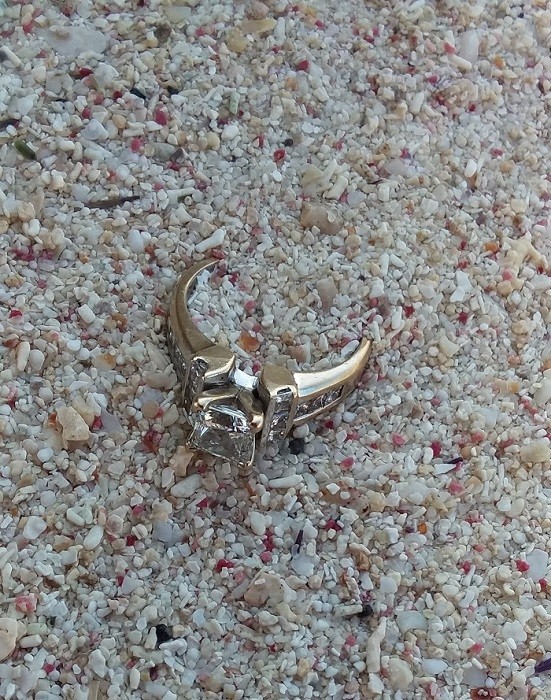
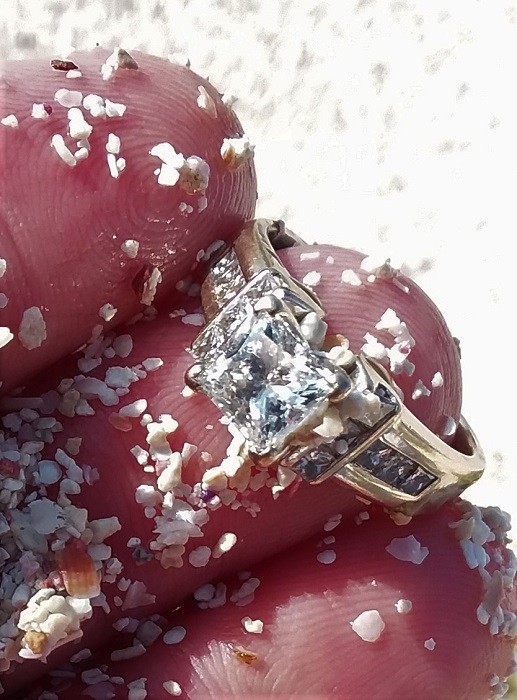
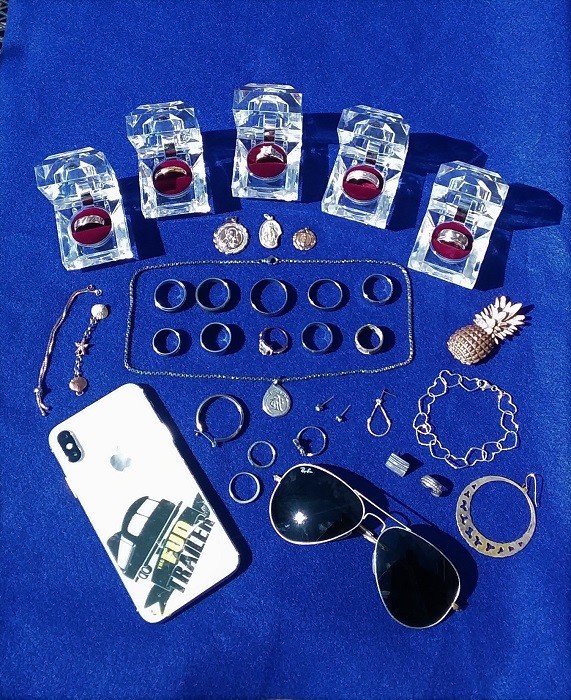
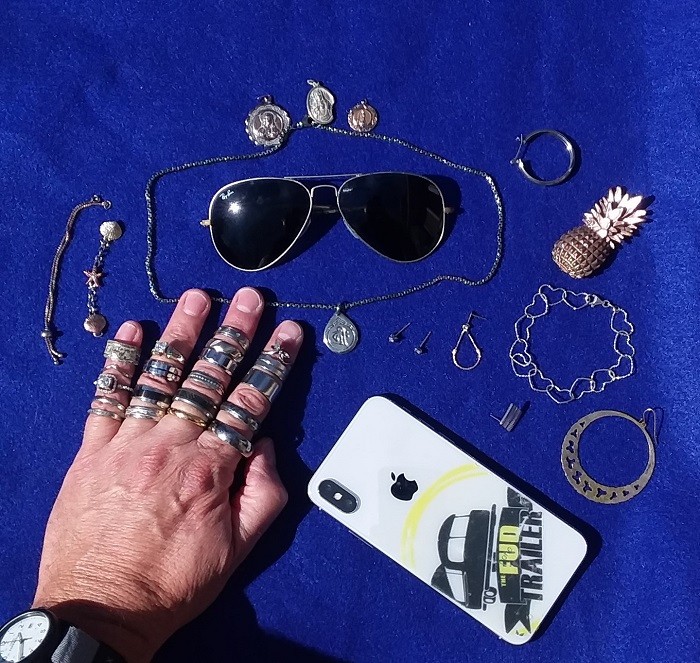
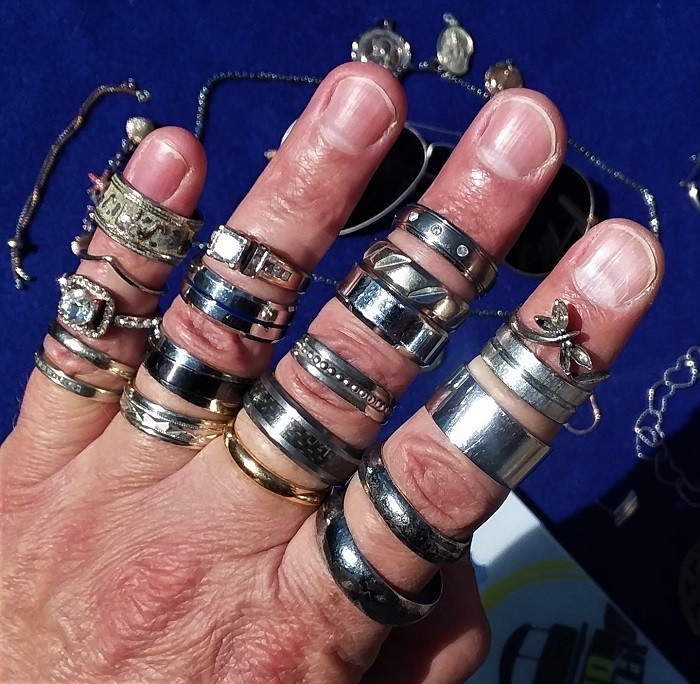
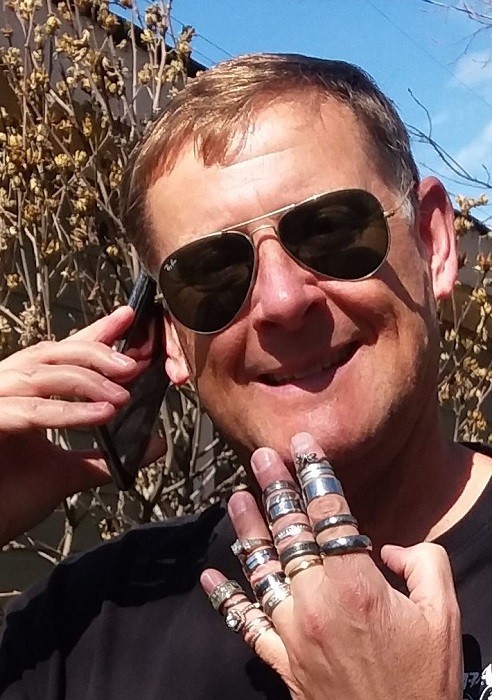
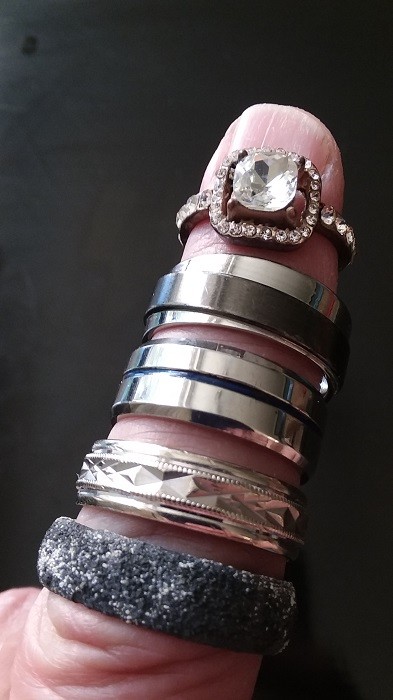
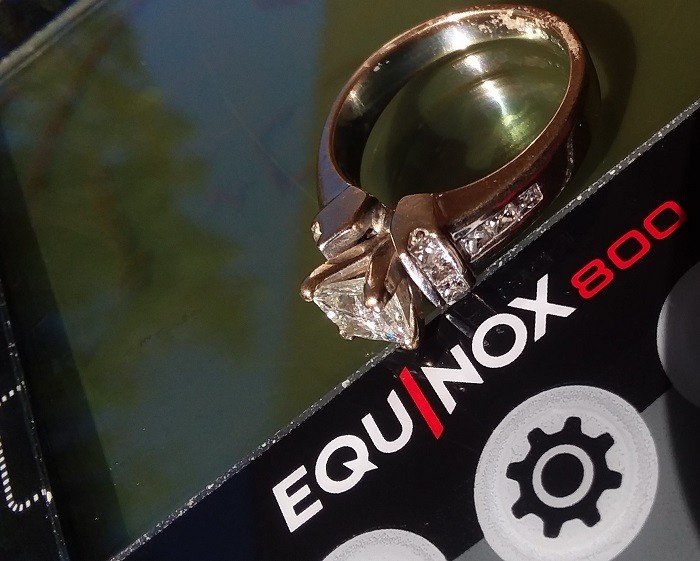
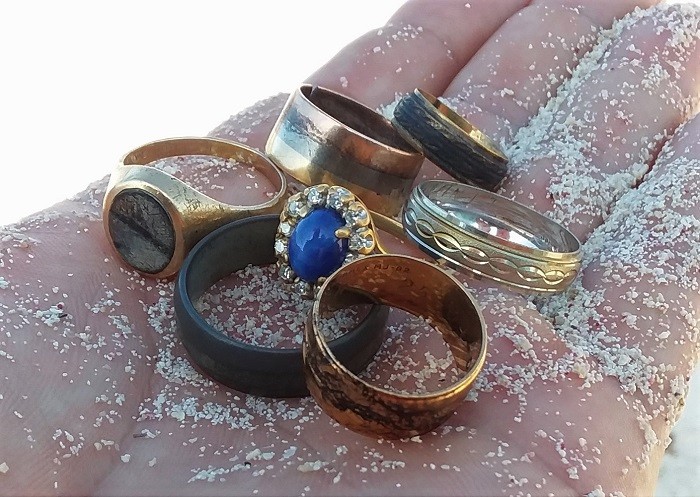
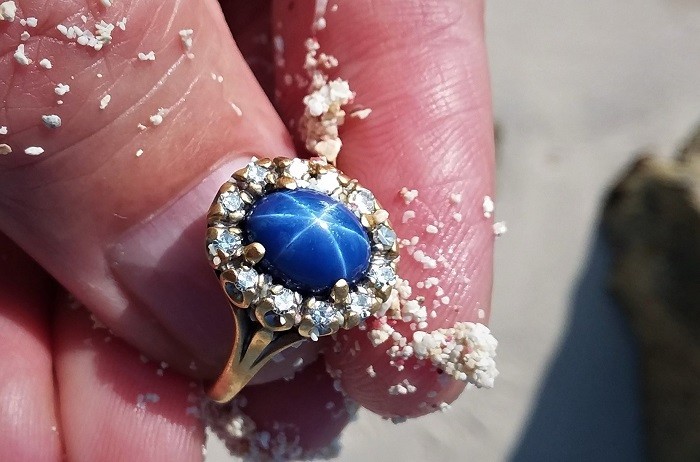
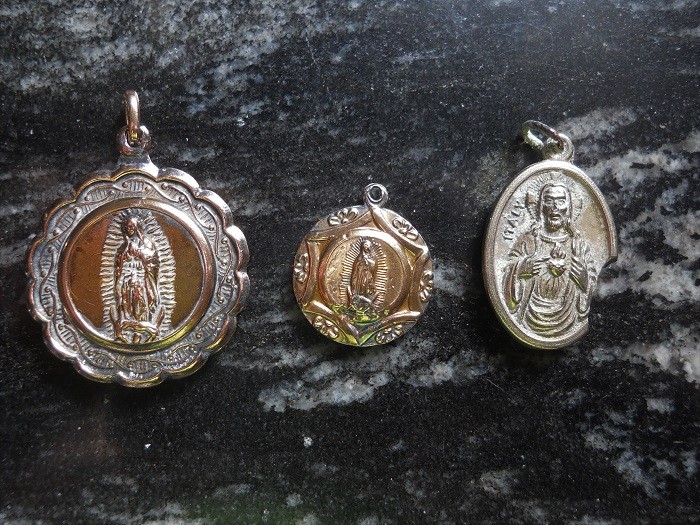
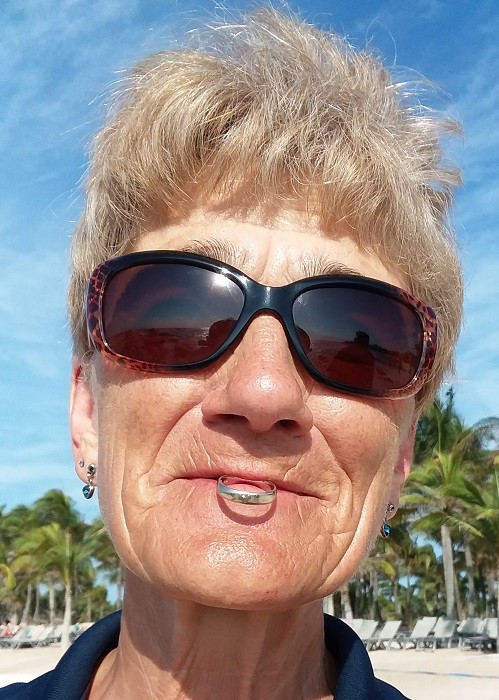
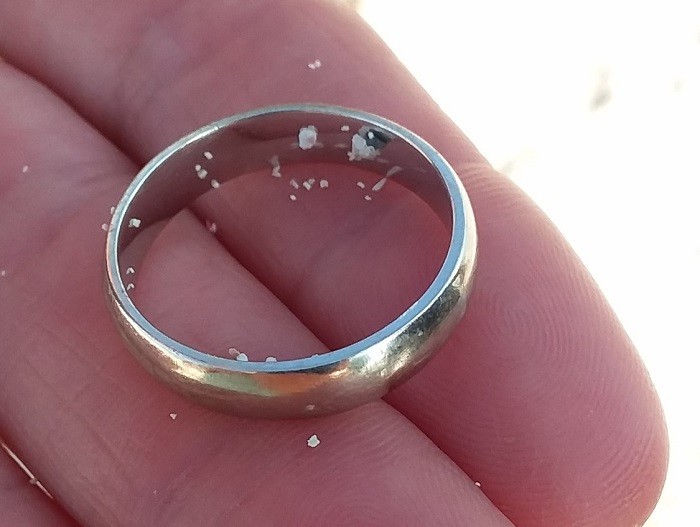
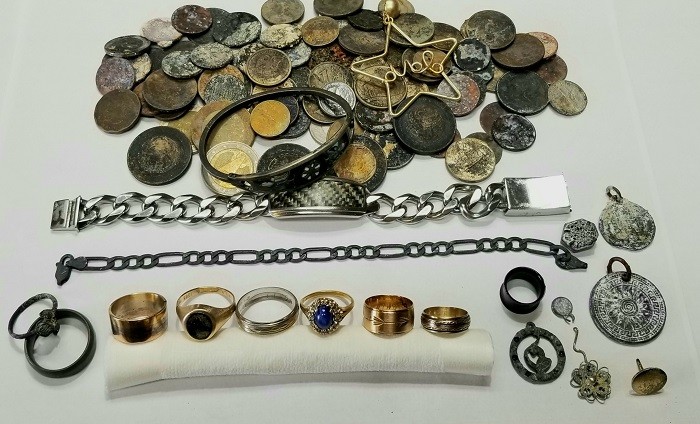

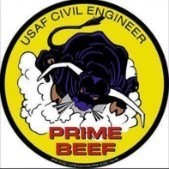
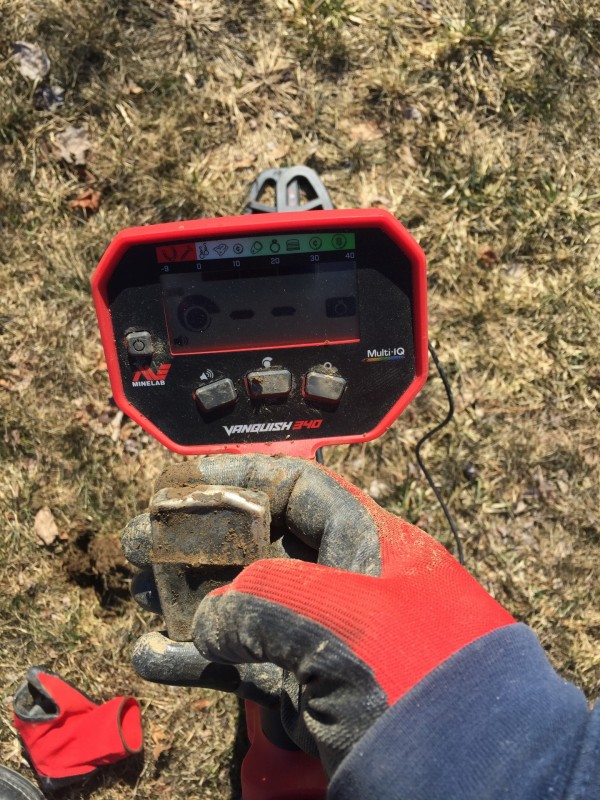




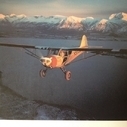
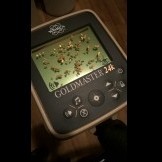
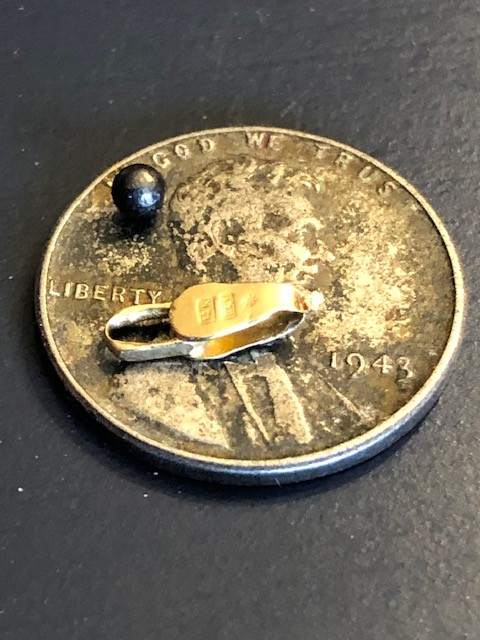


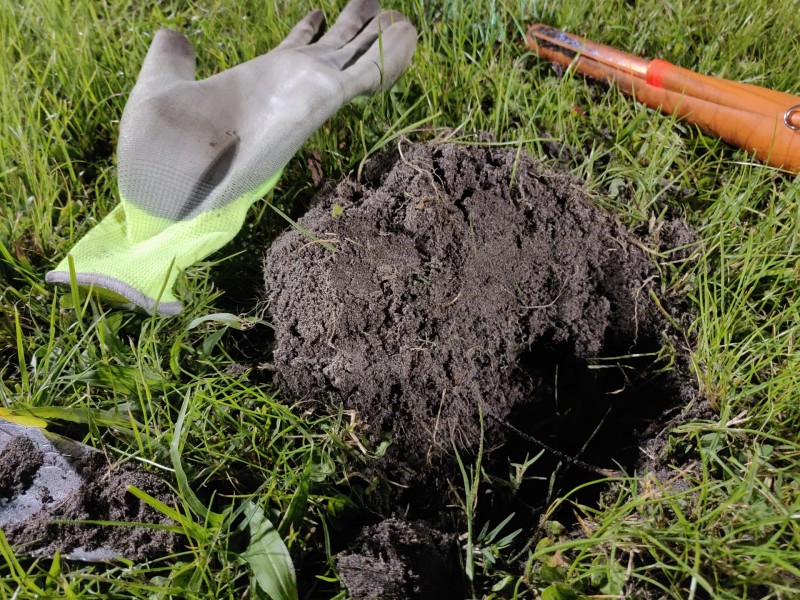
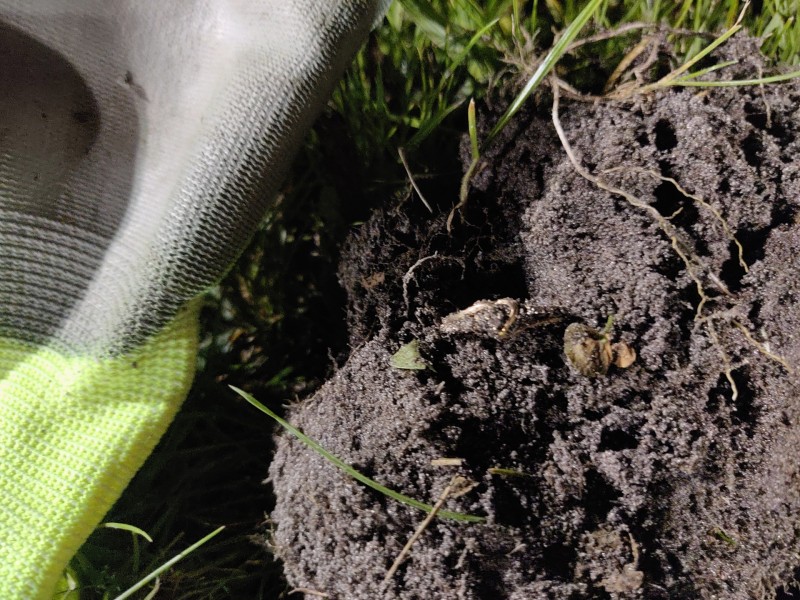
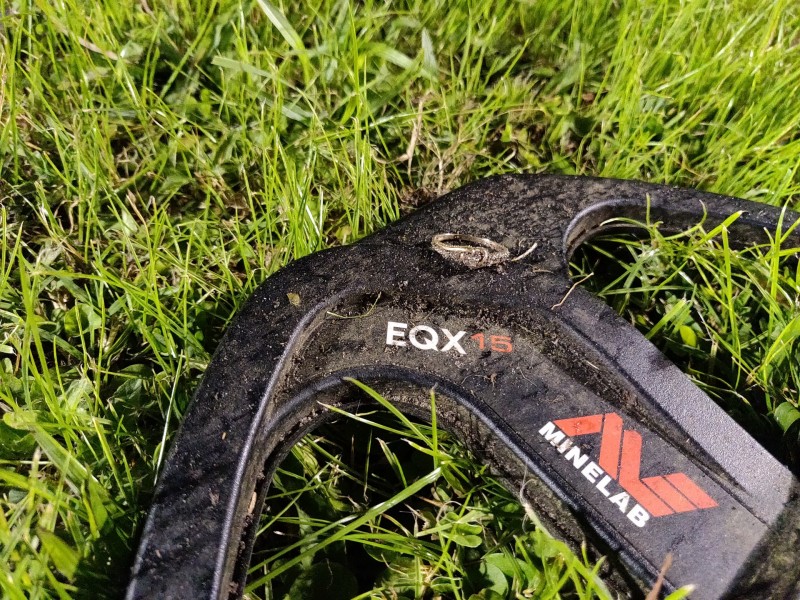
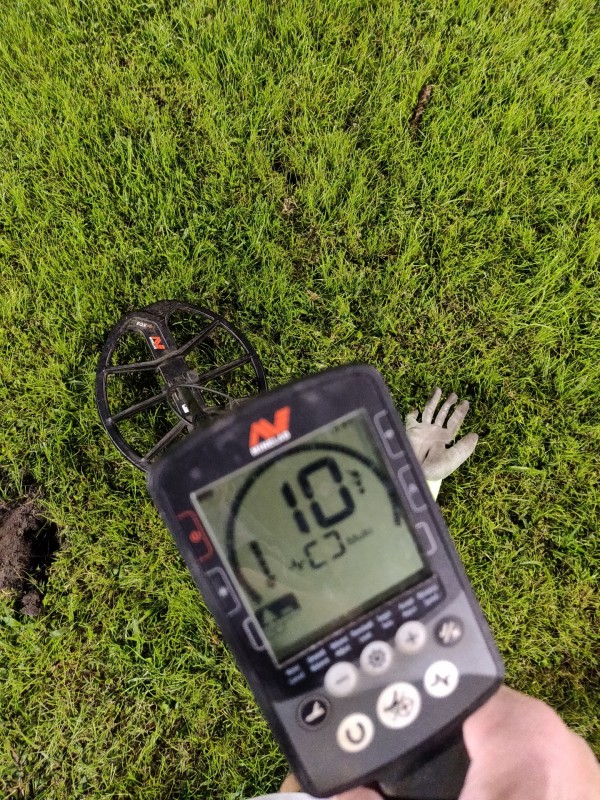
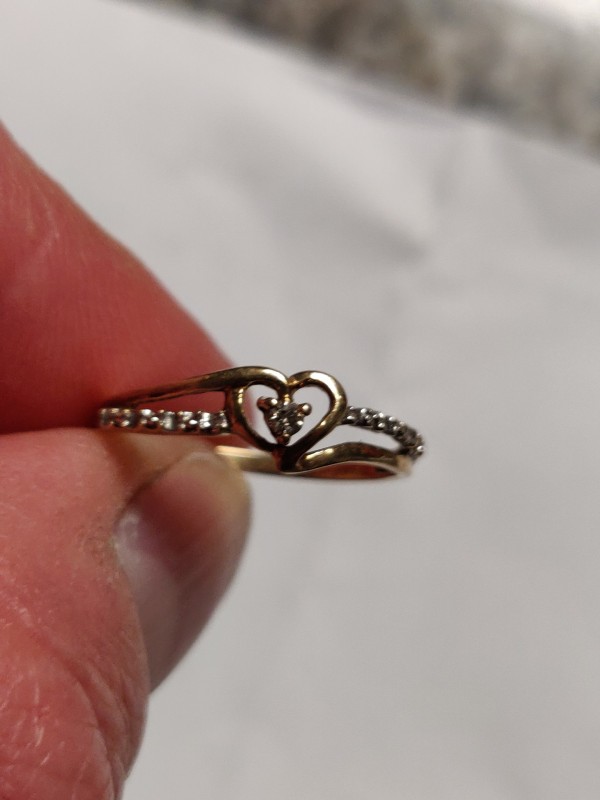

.thumb.jpg.ac5e8ee36e43bcab745dbc623fcf1874.jpg)
